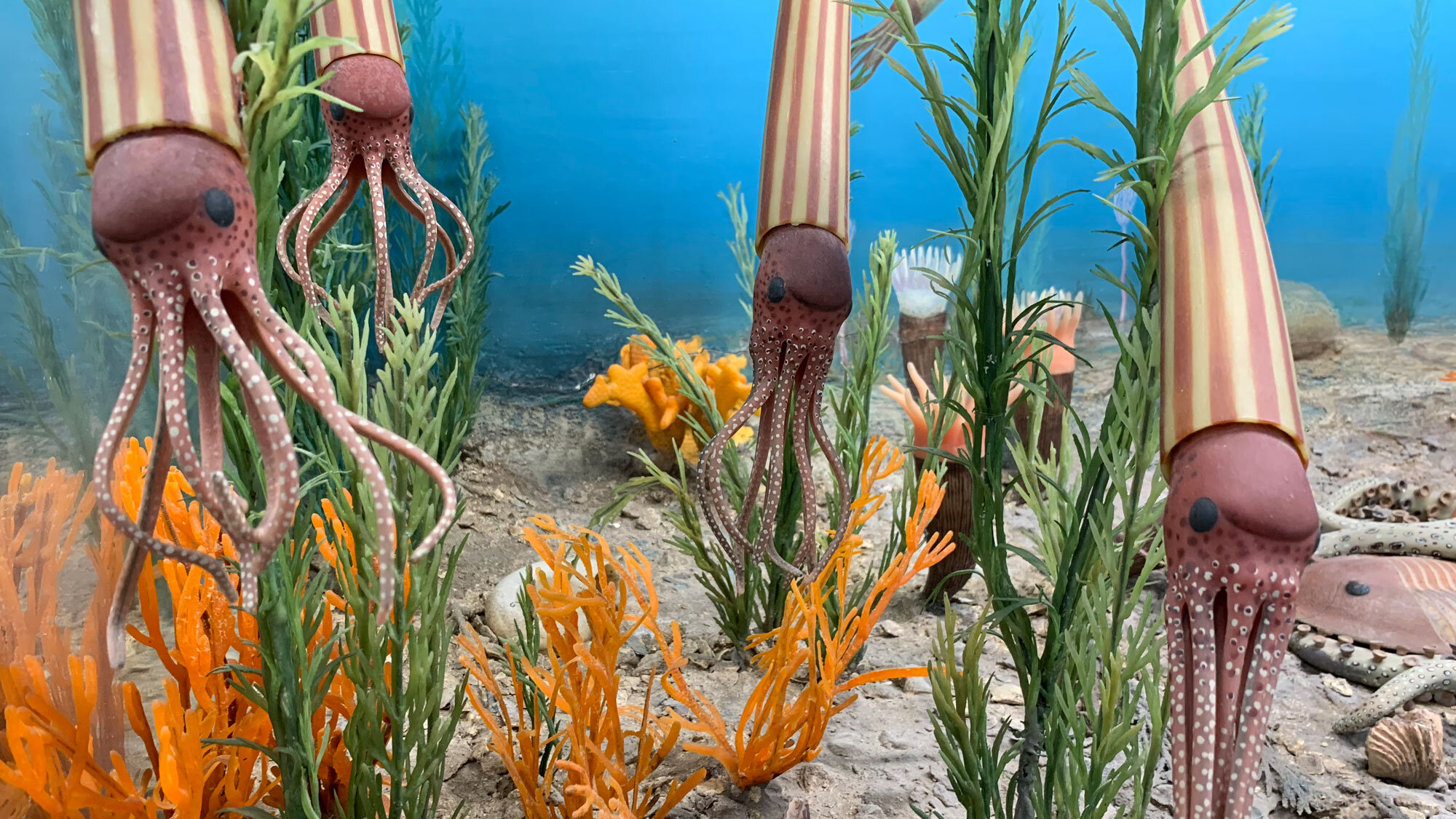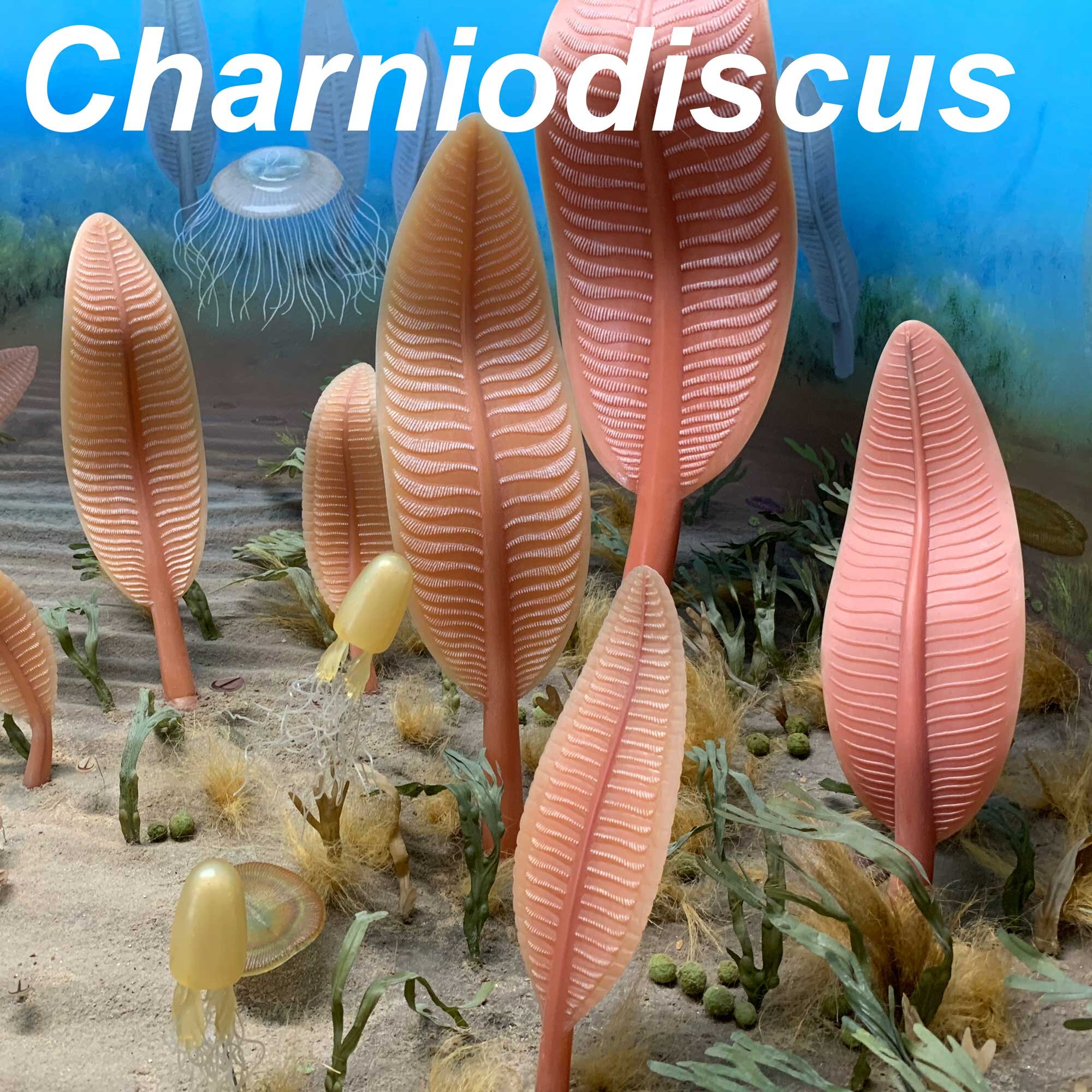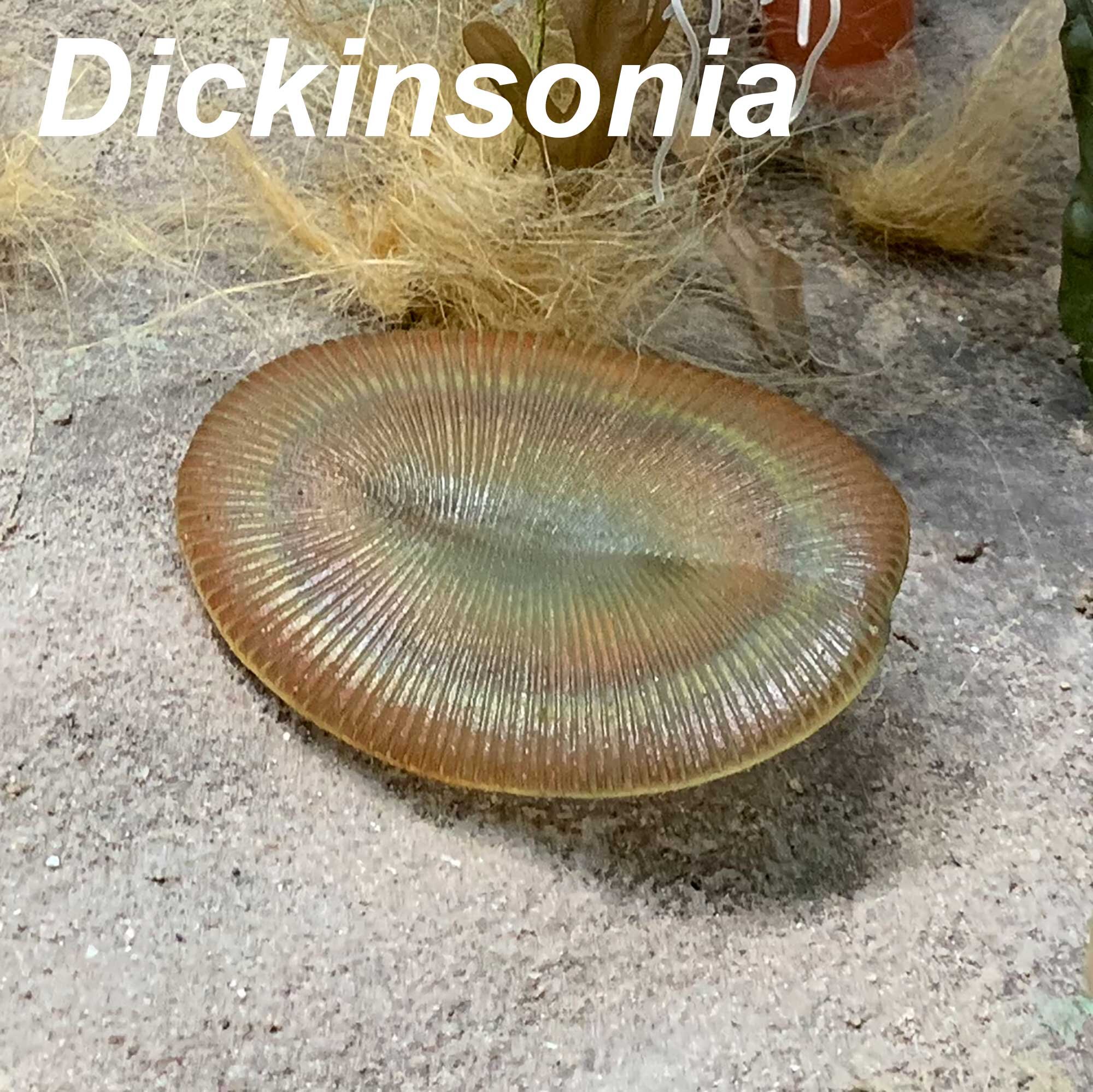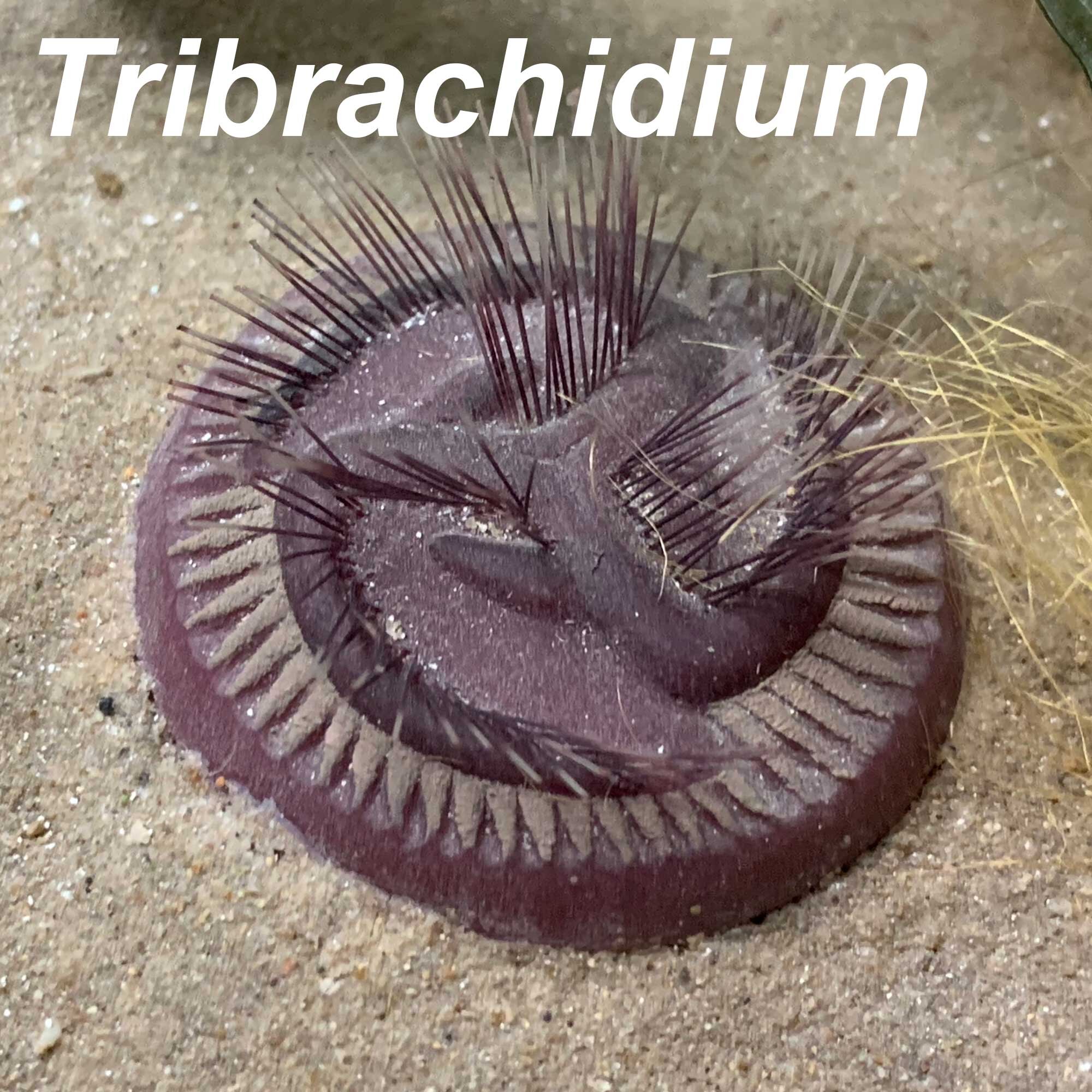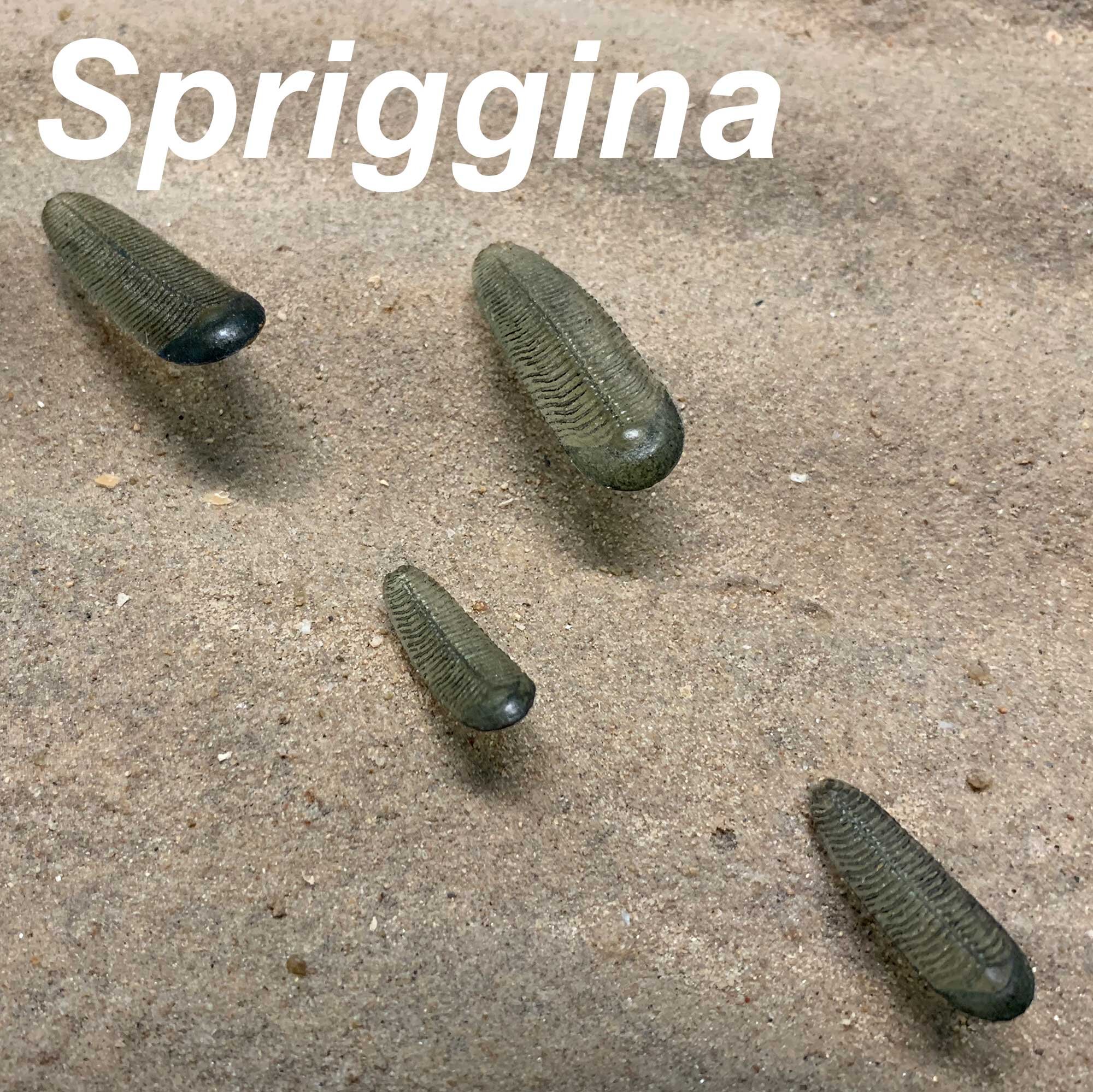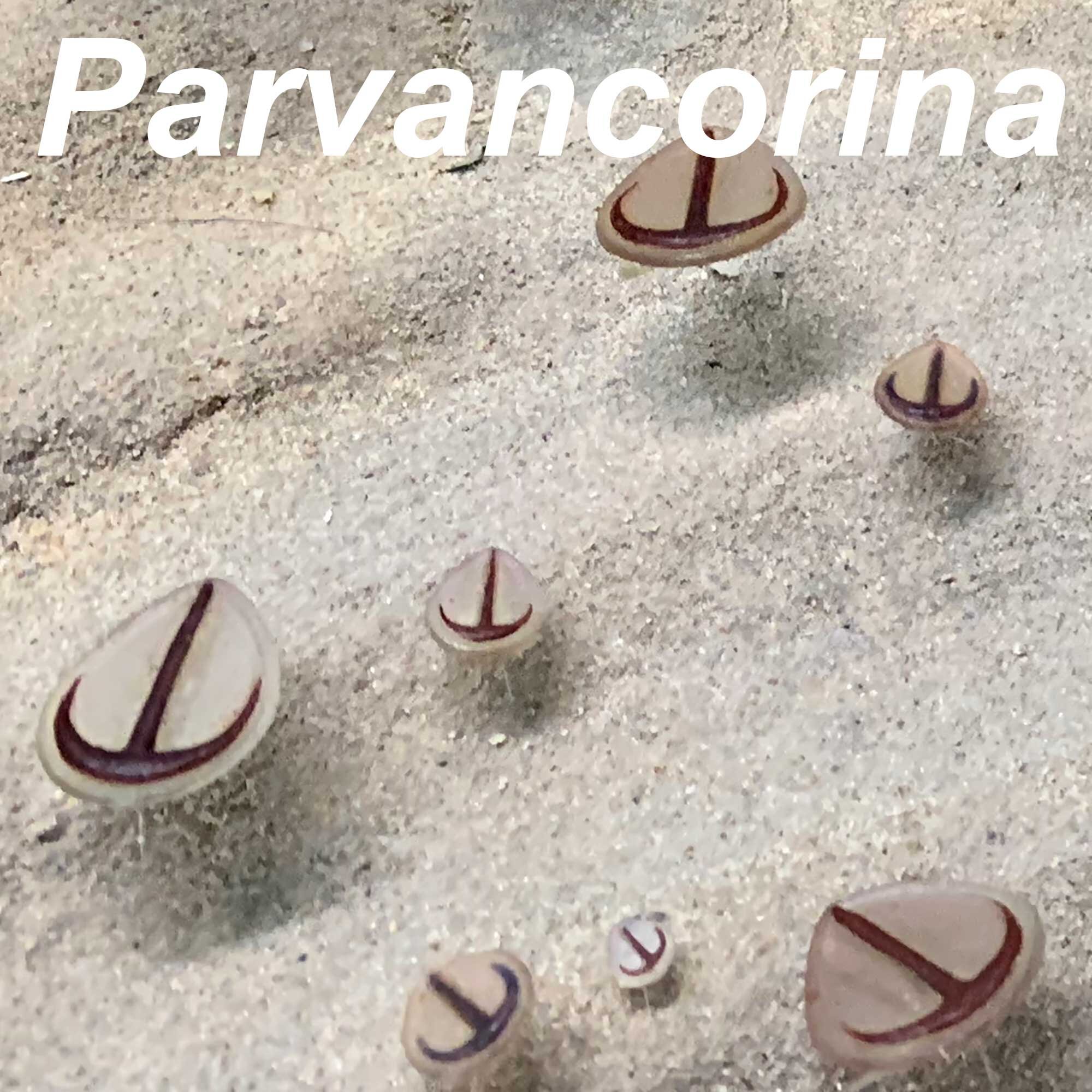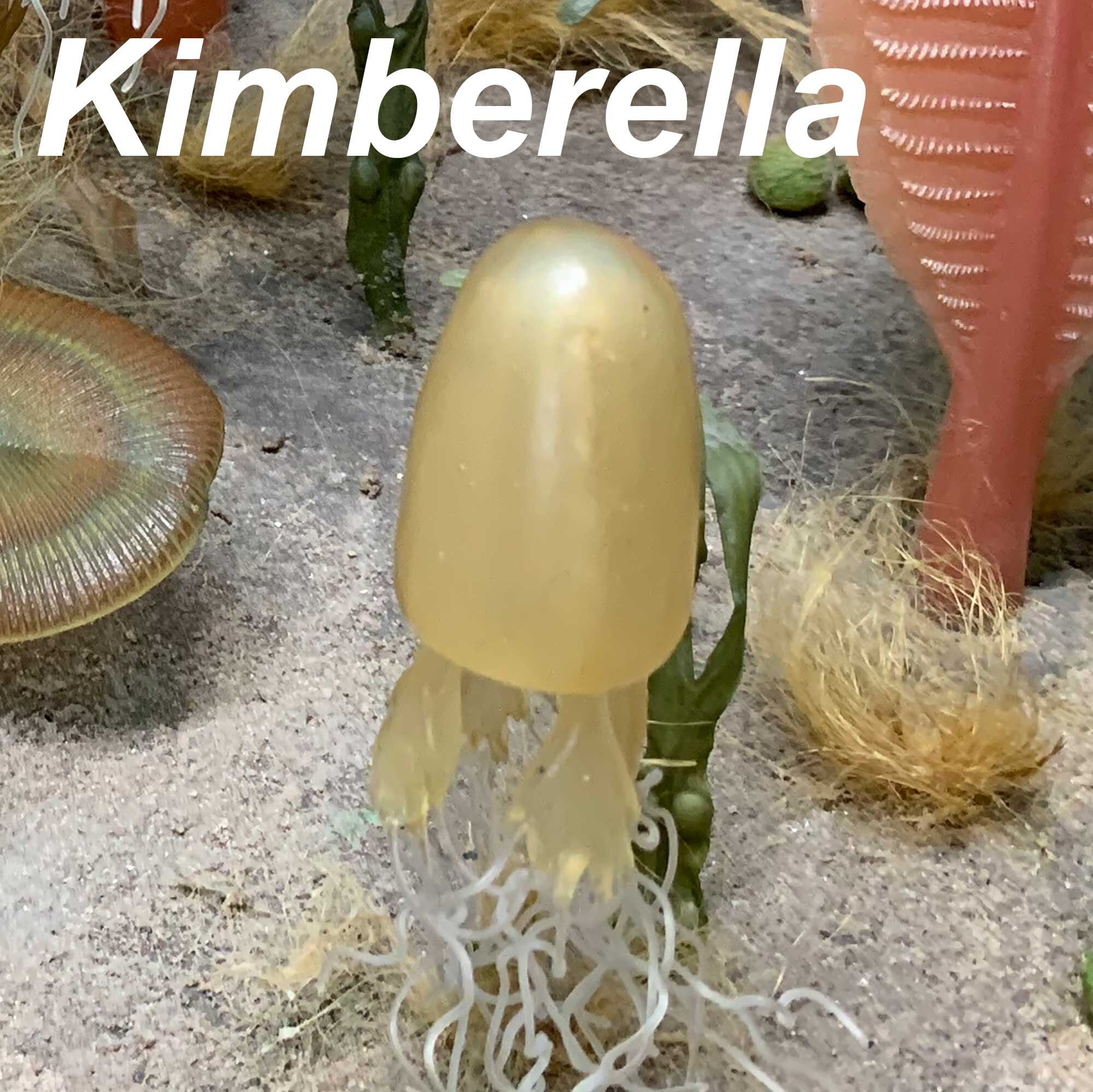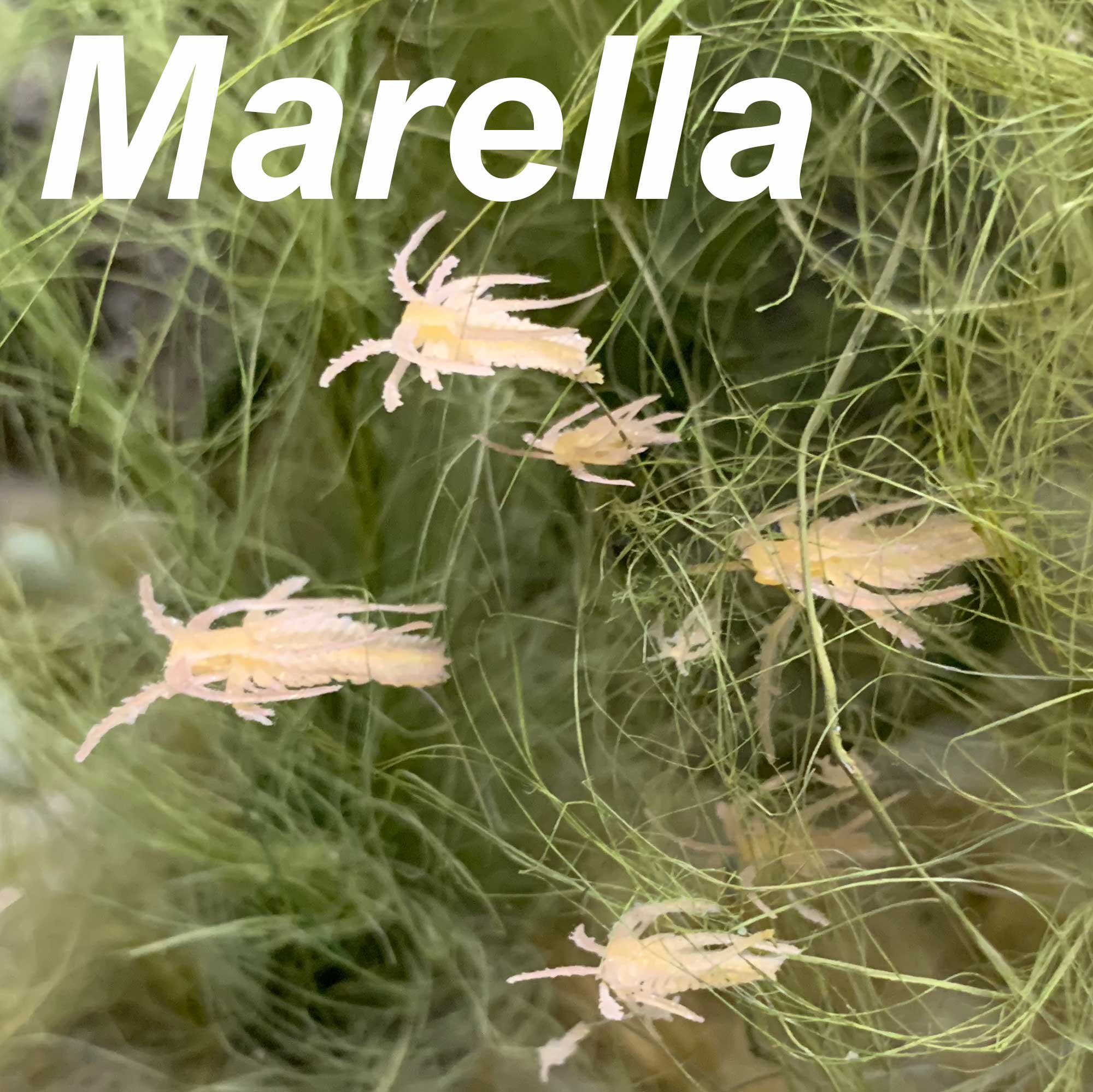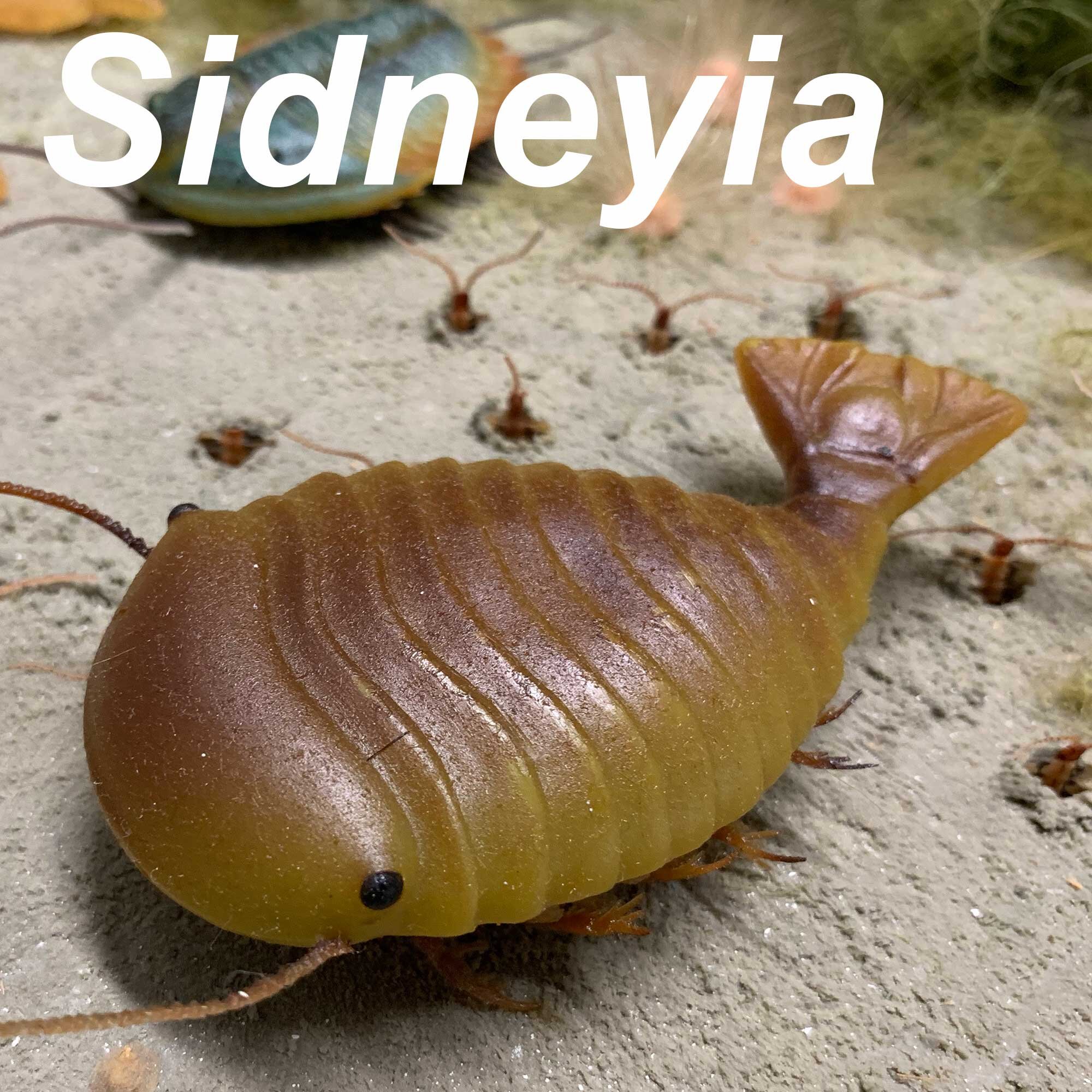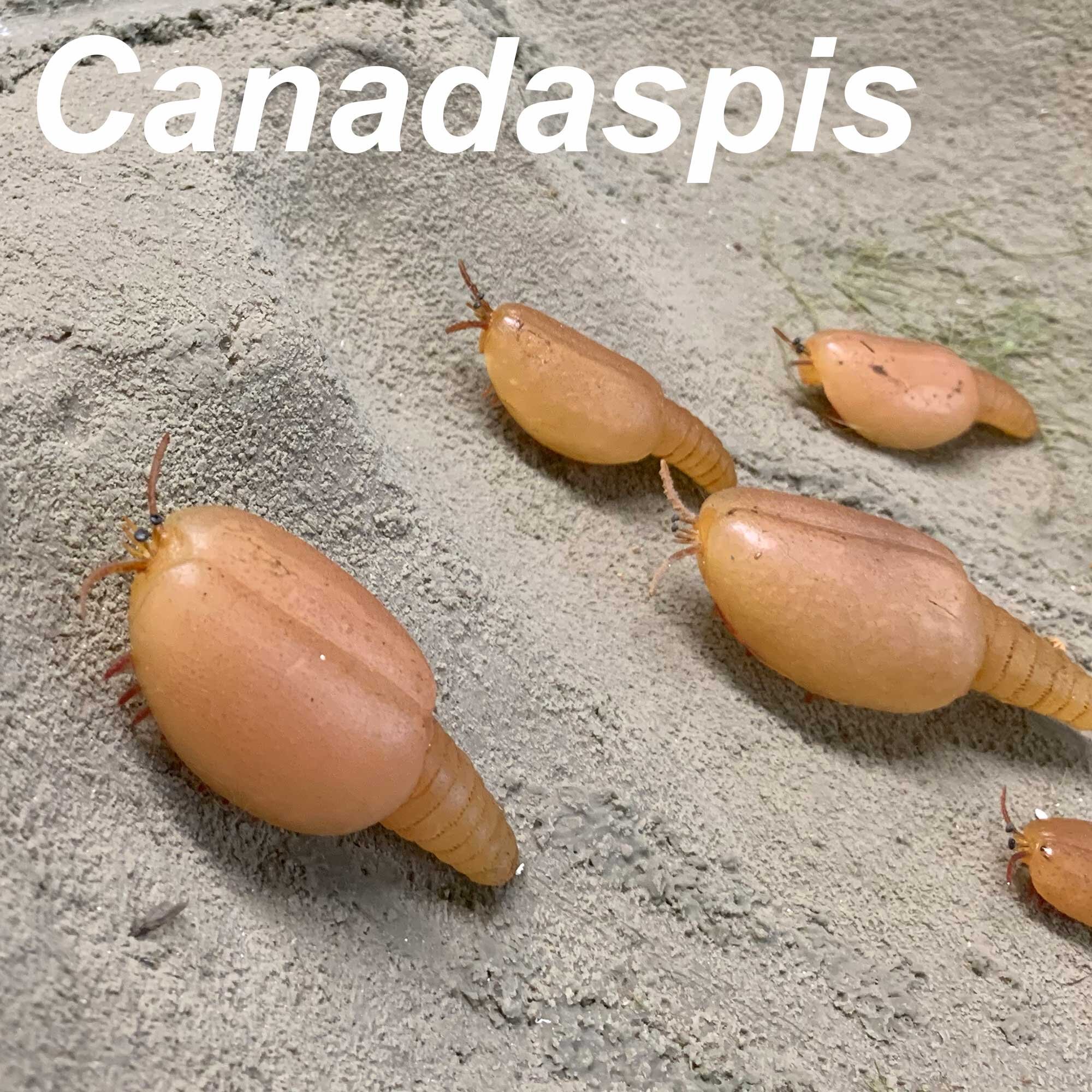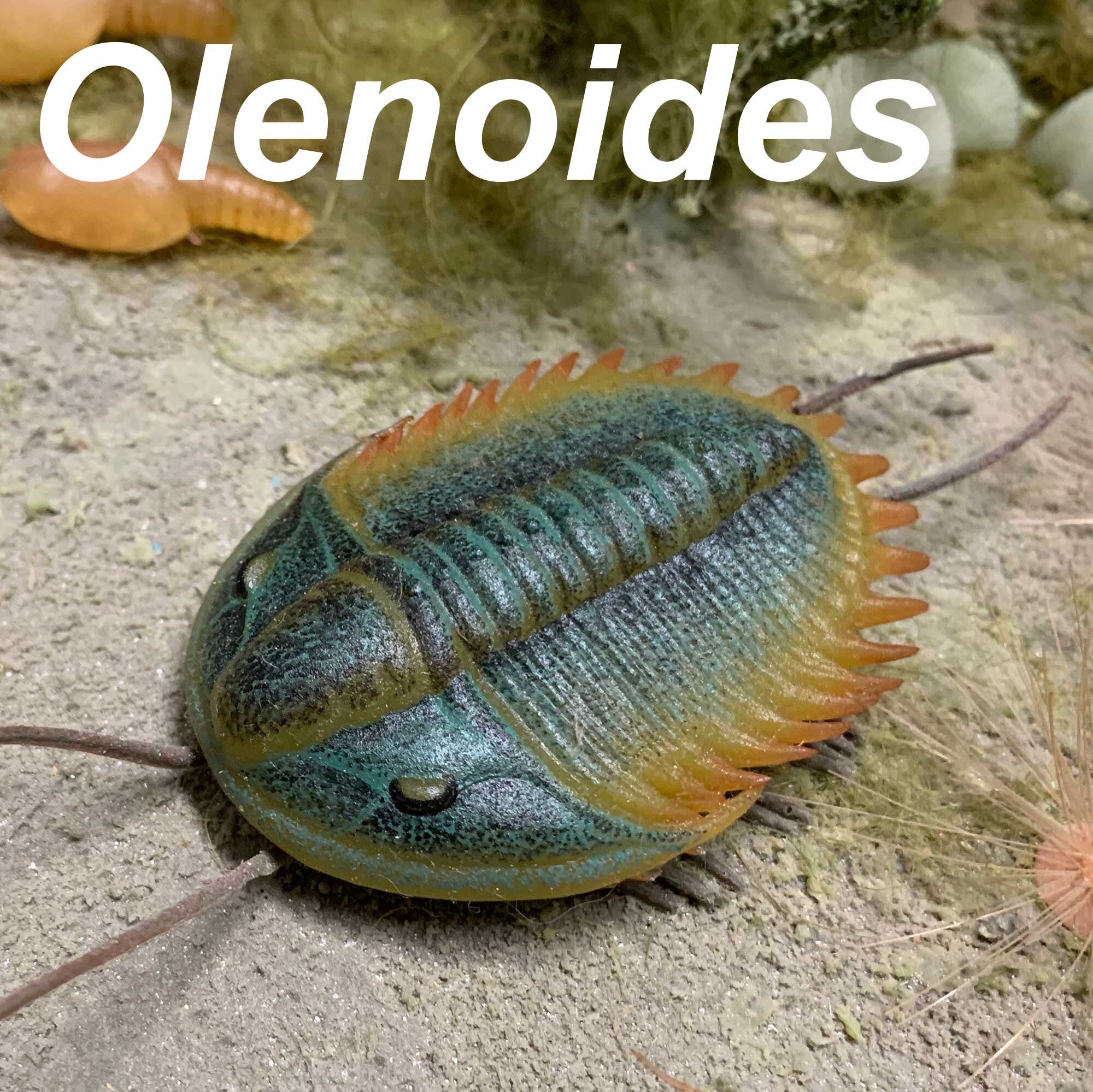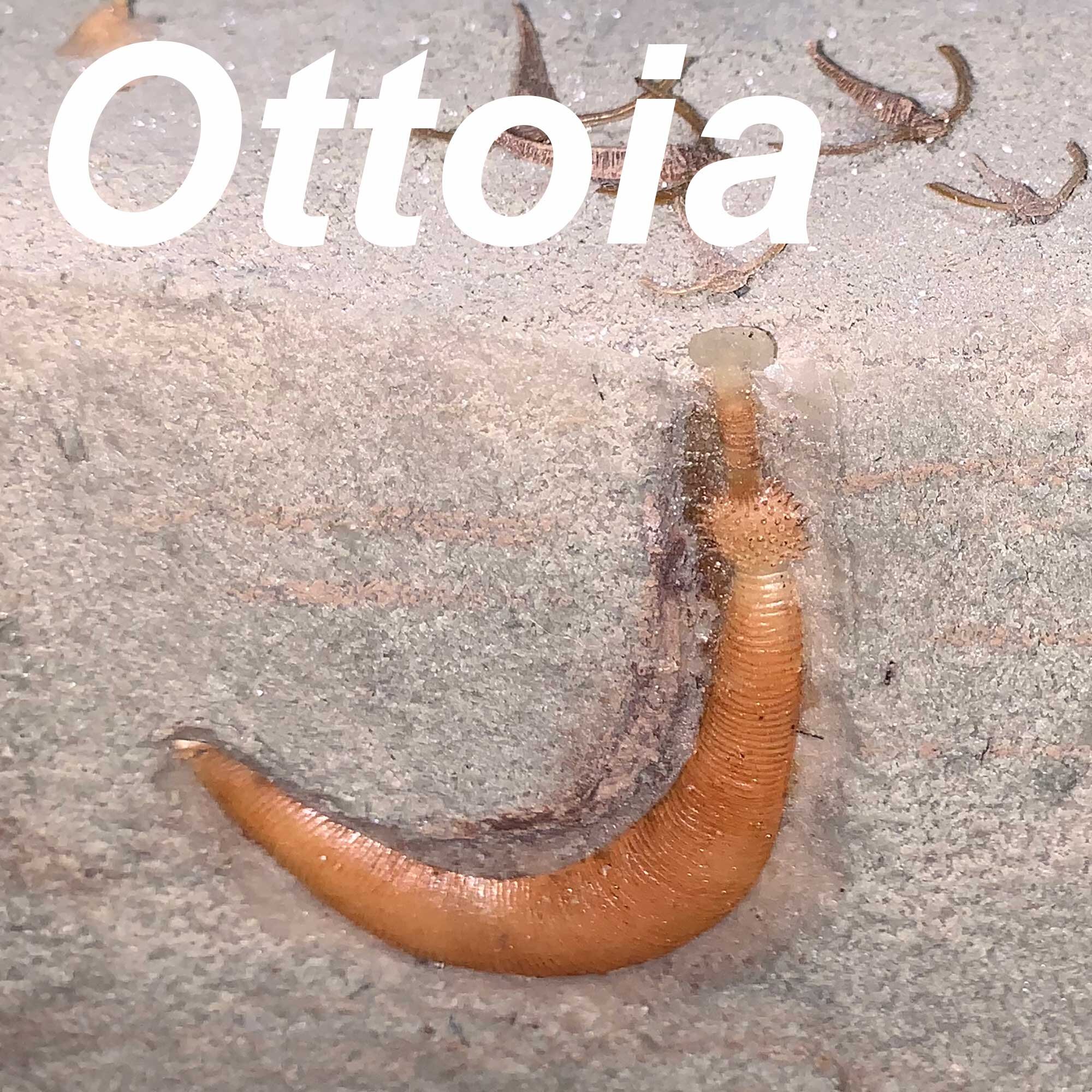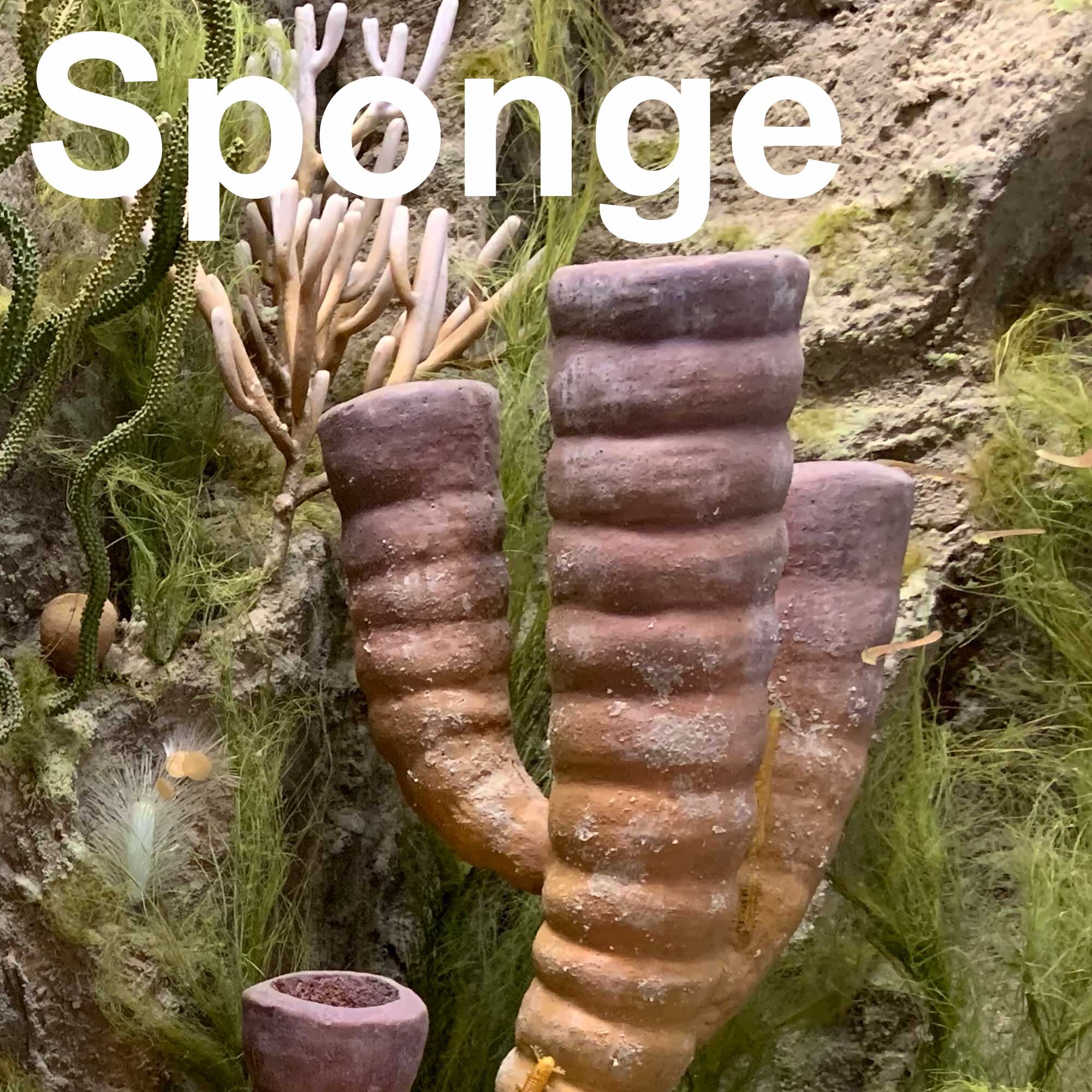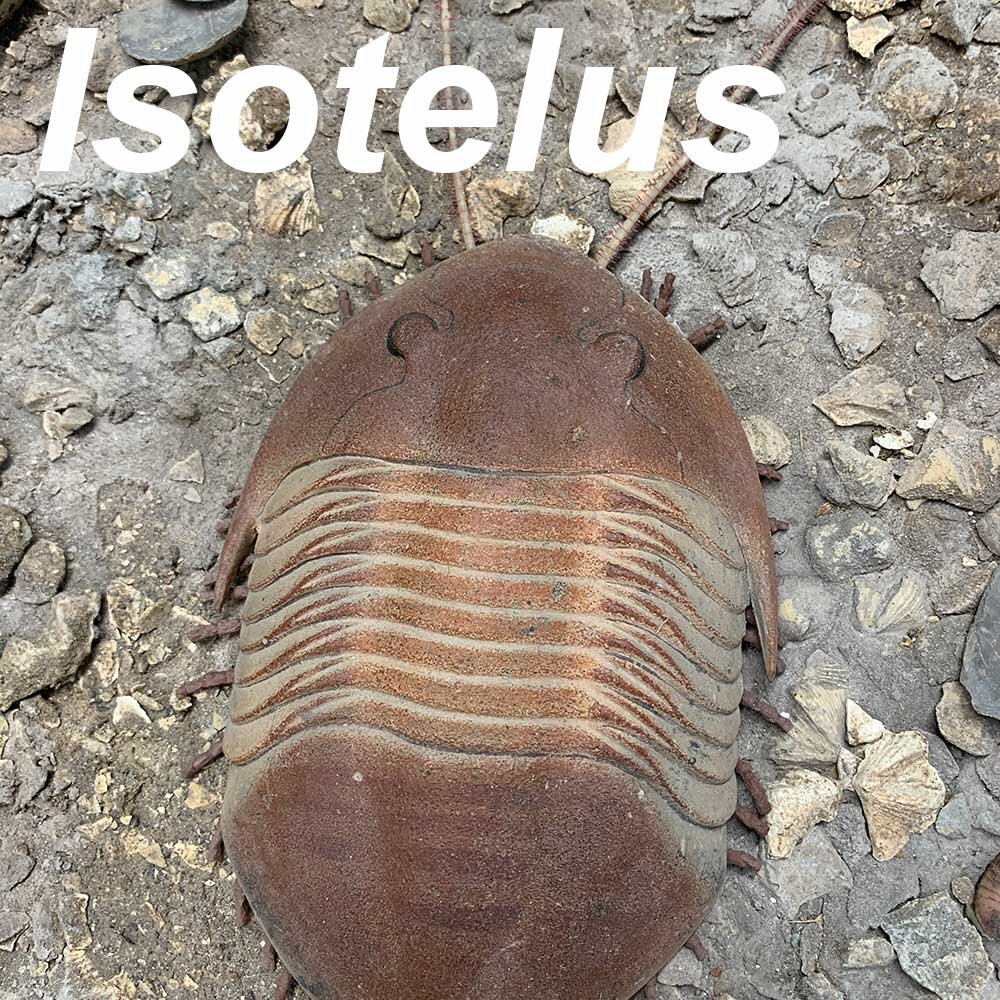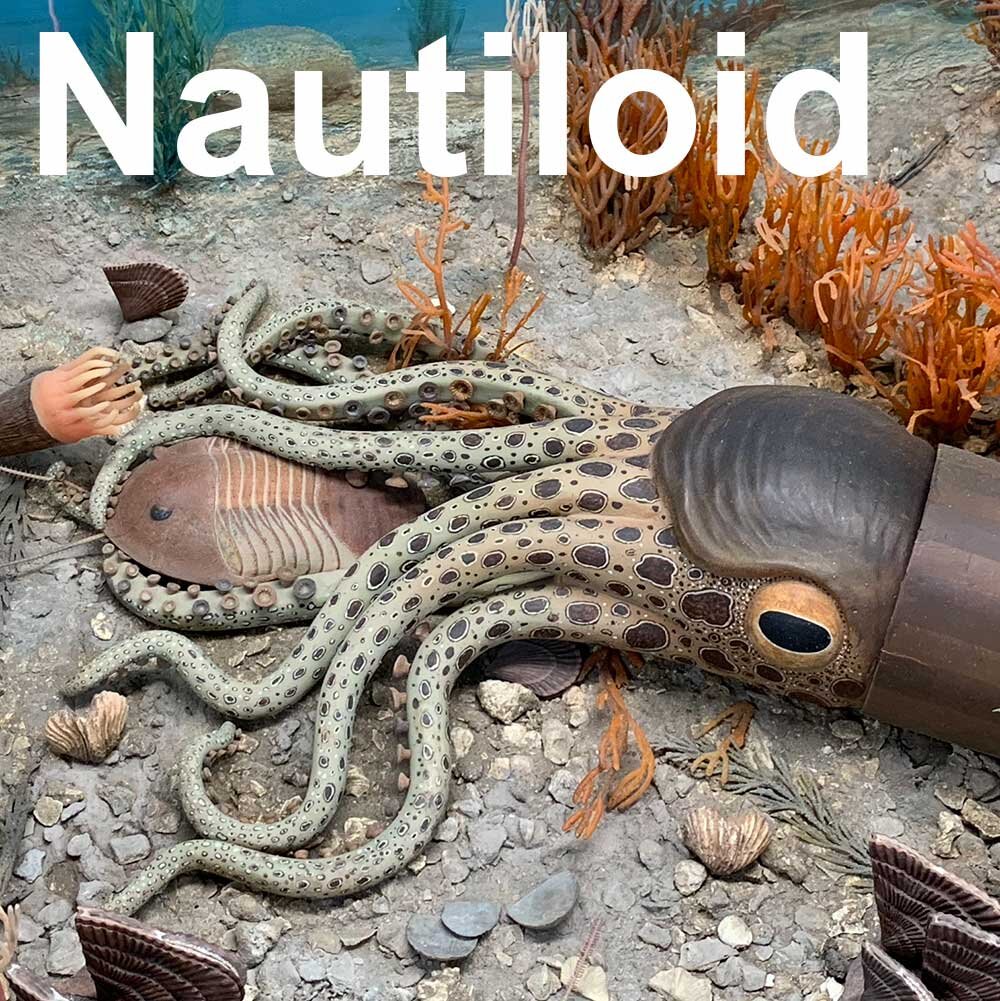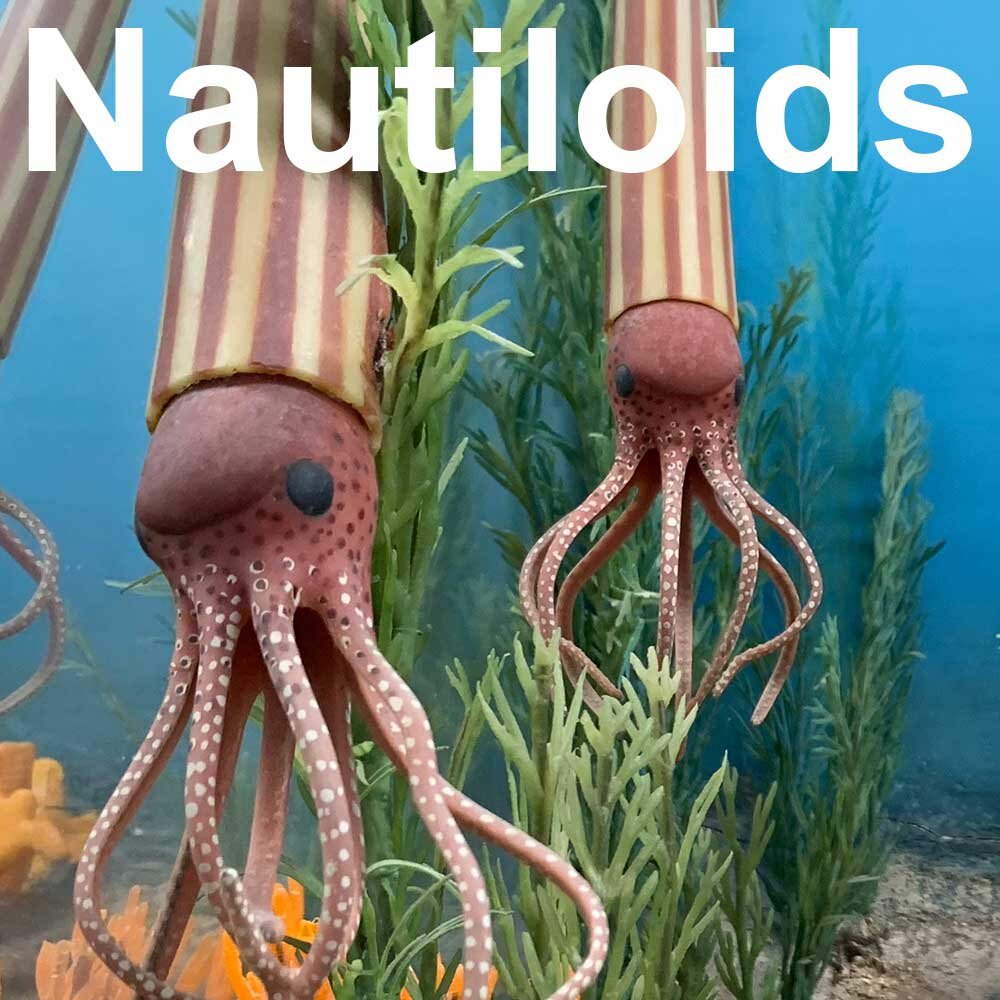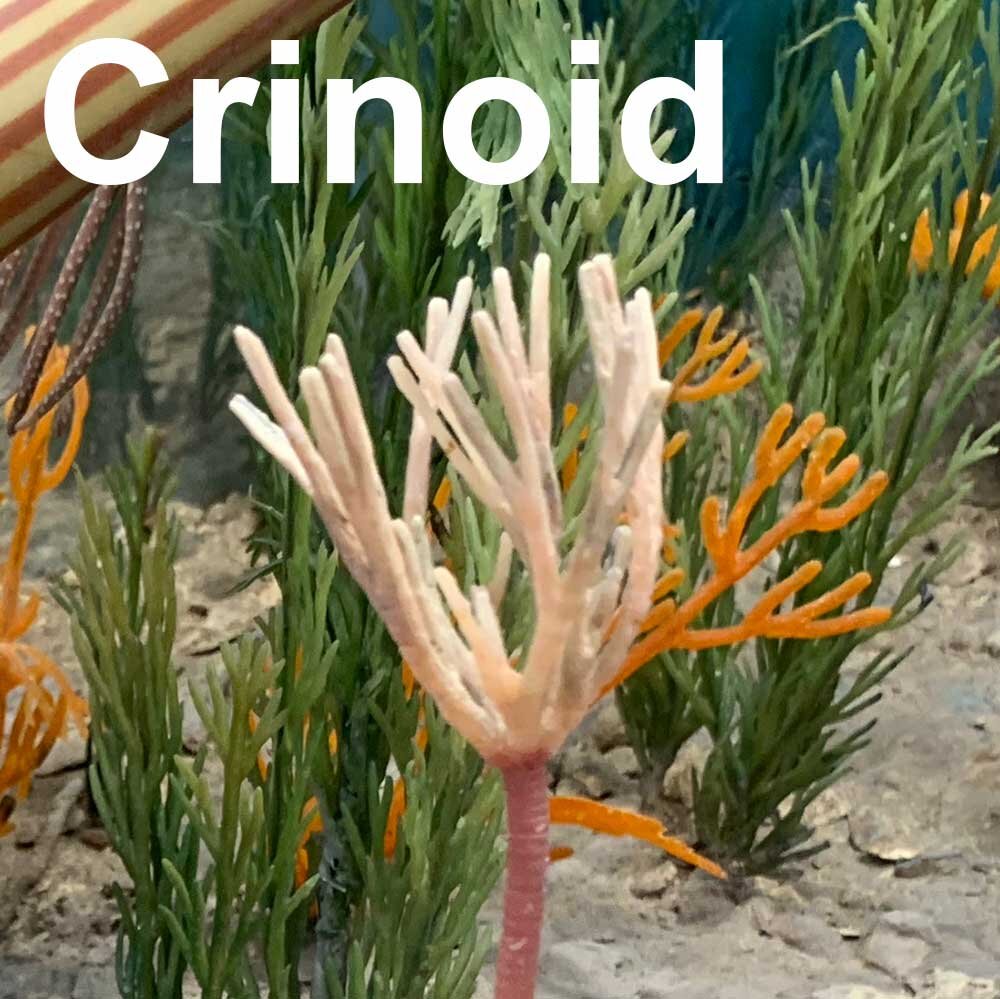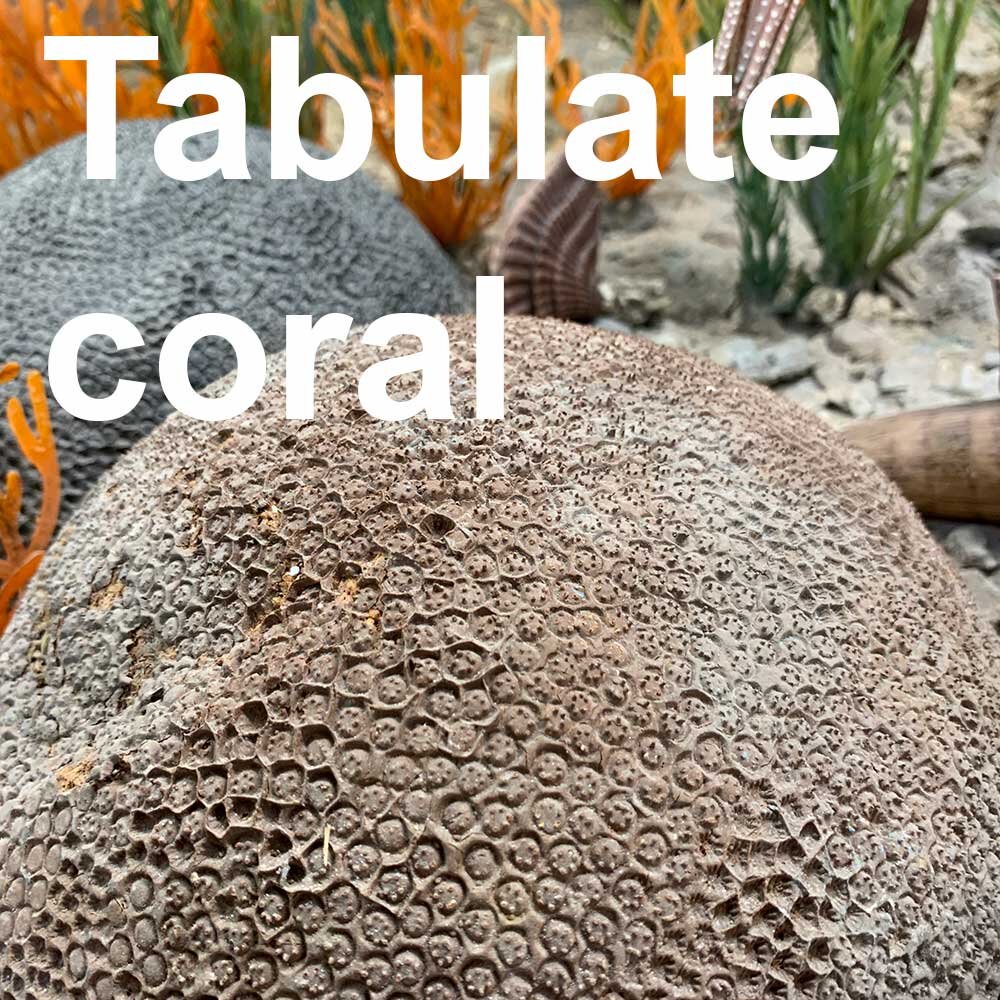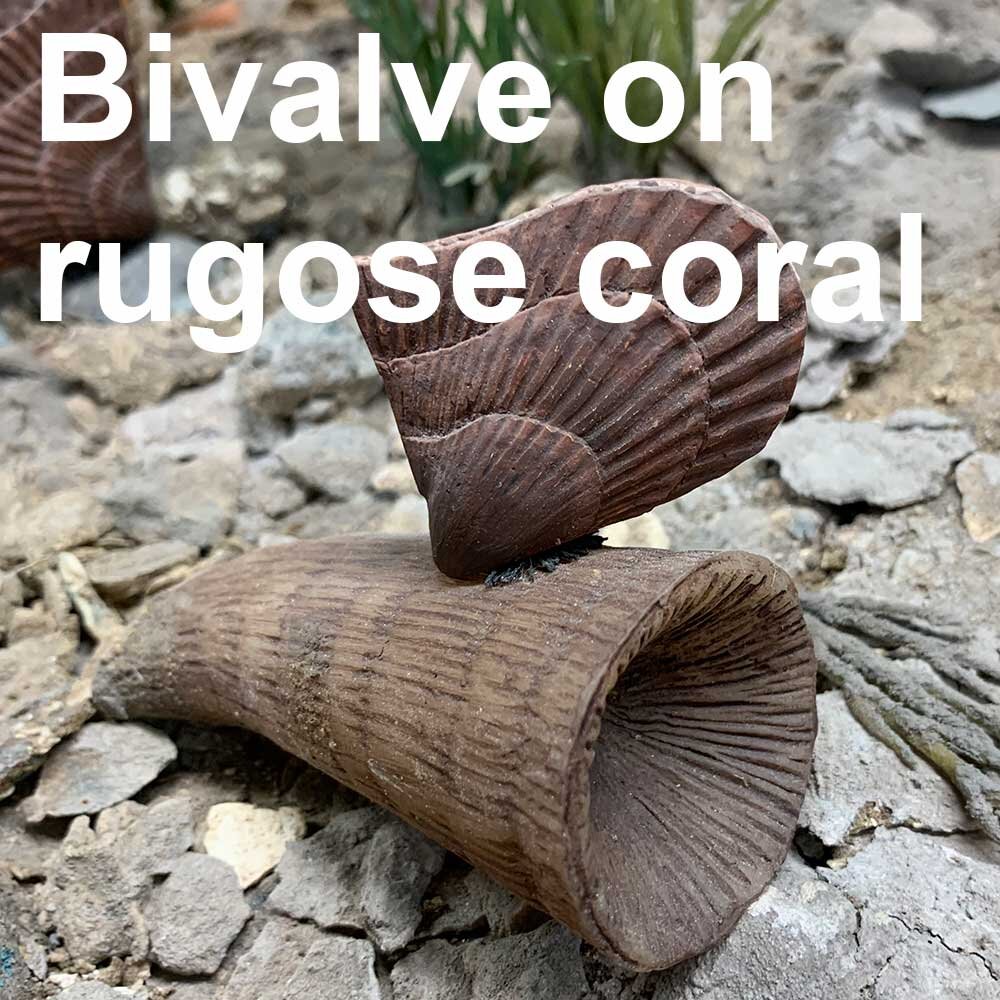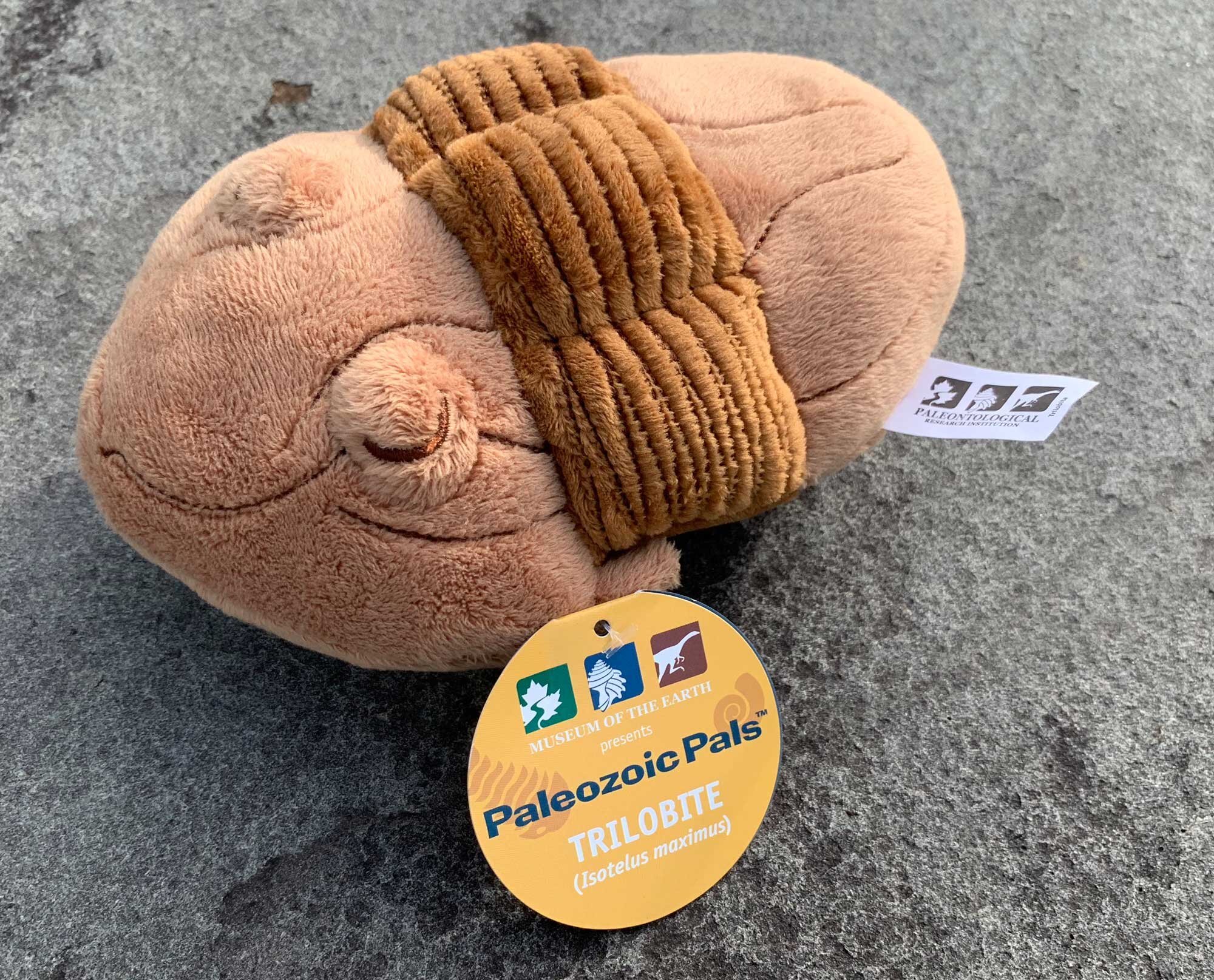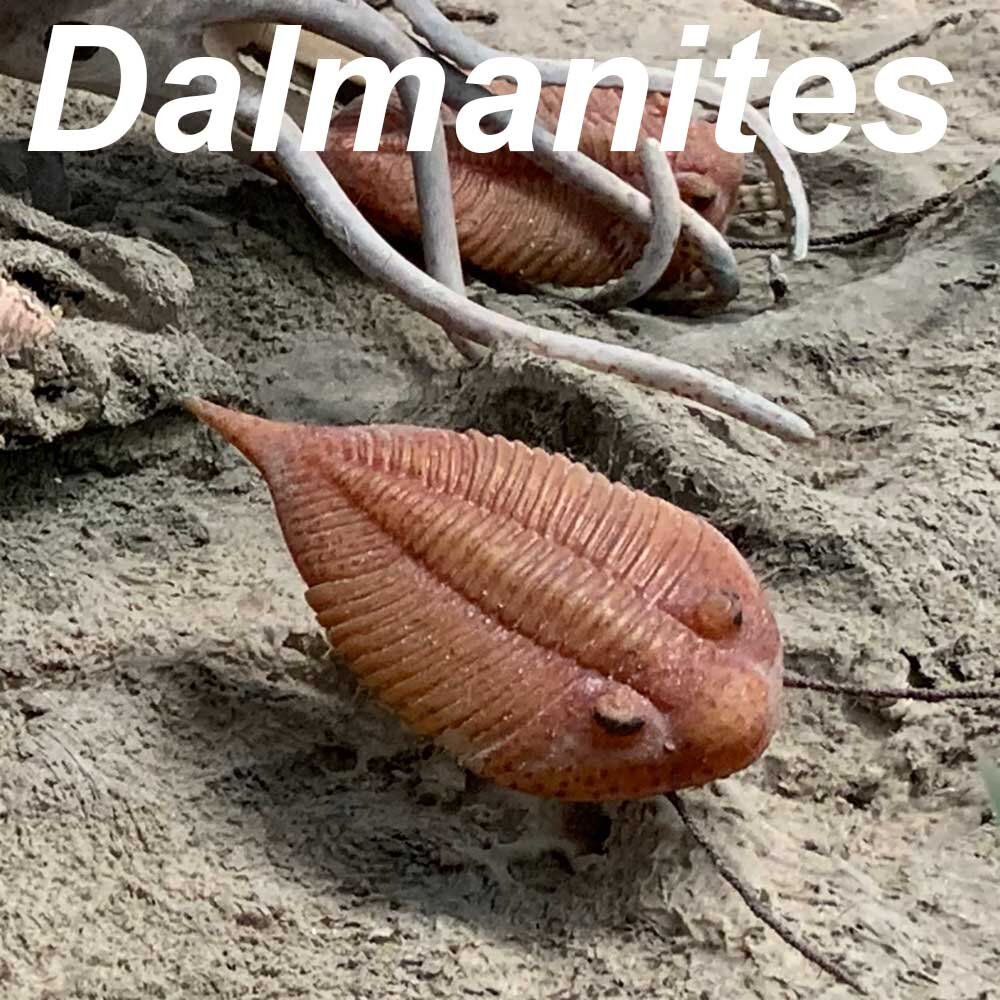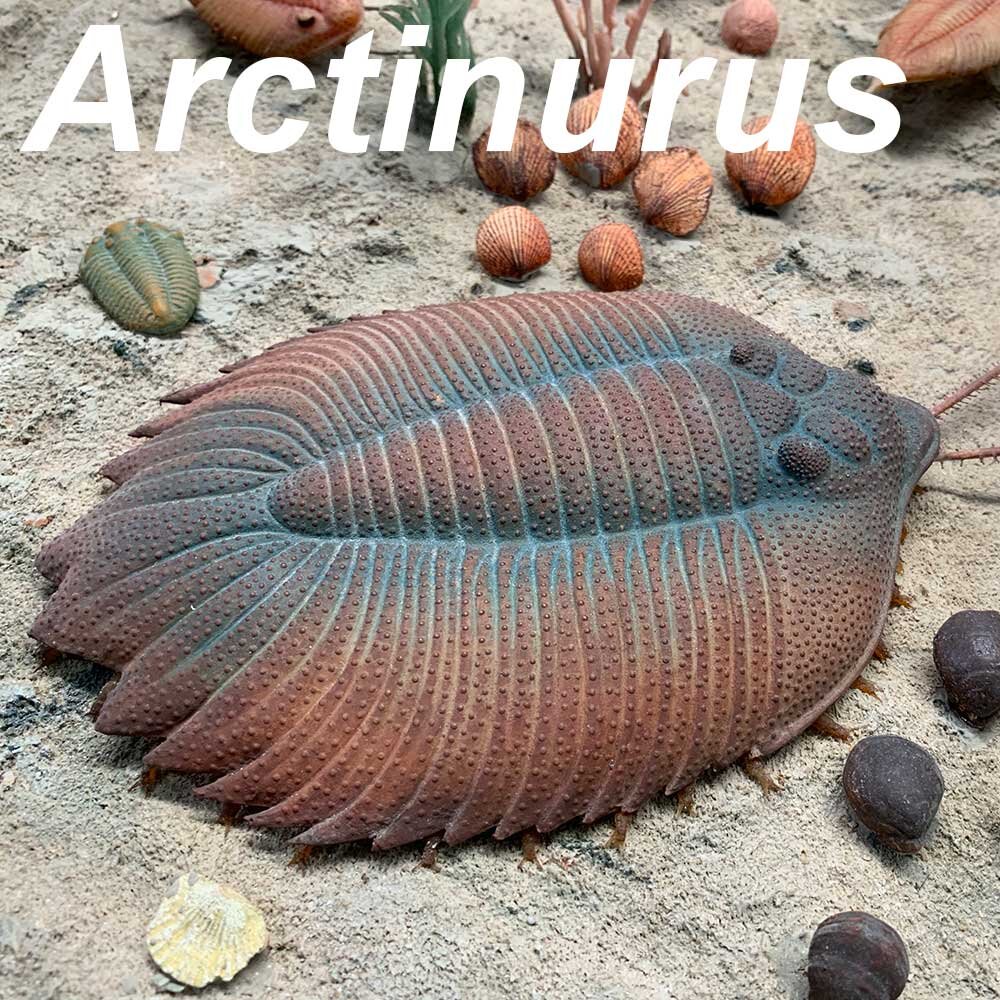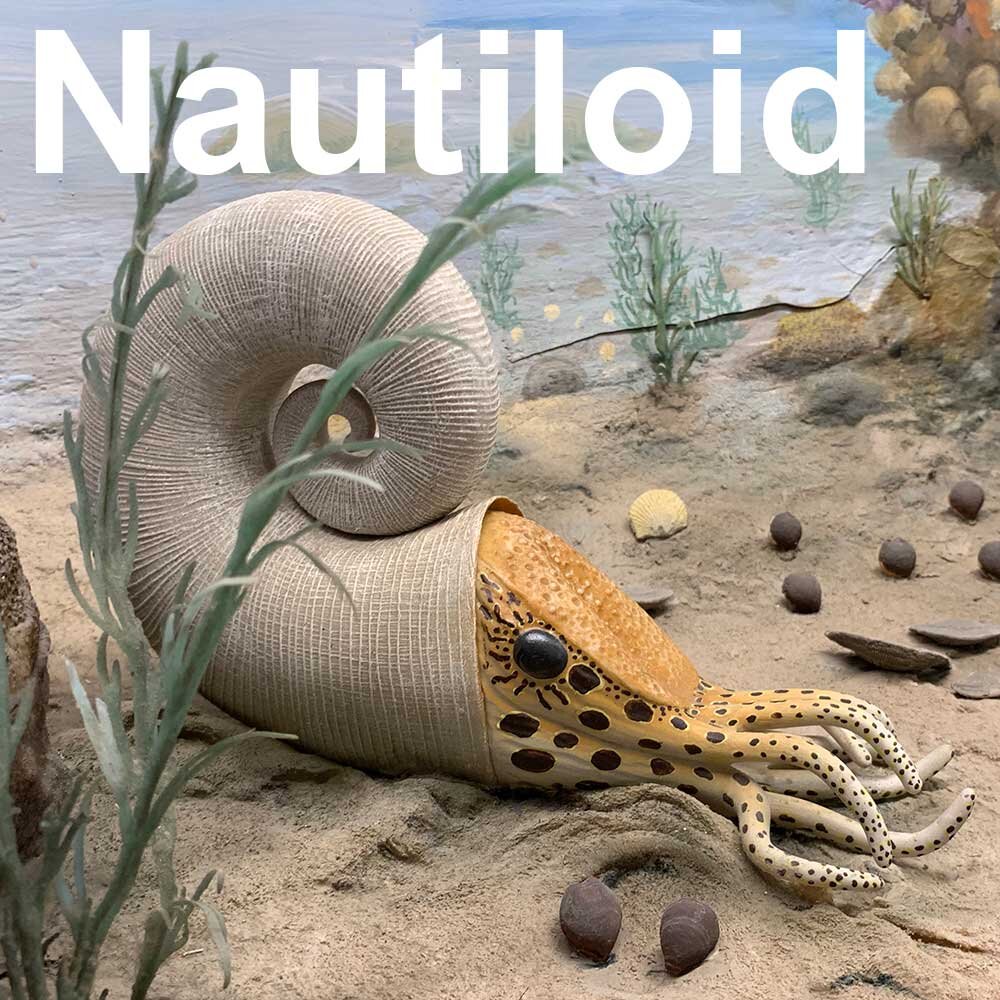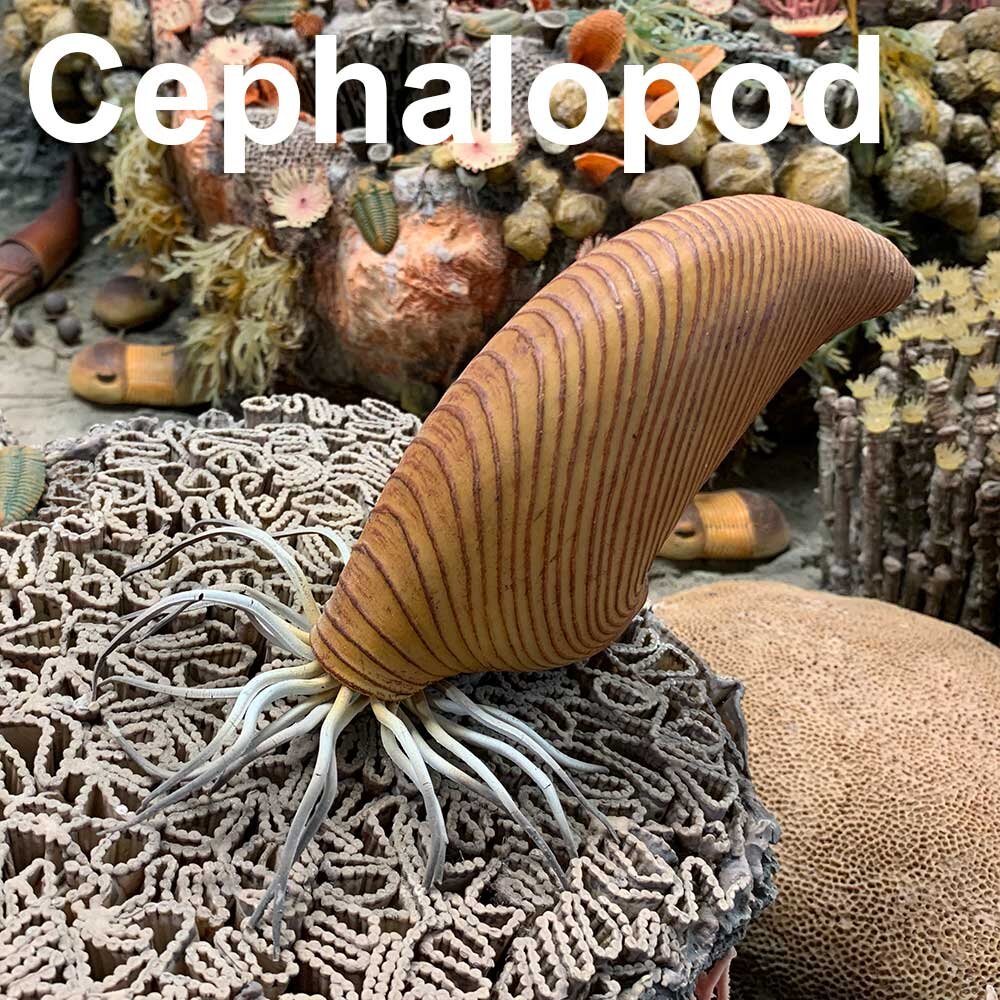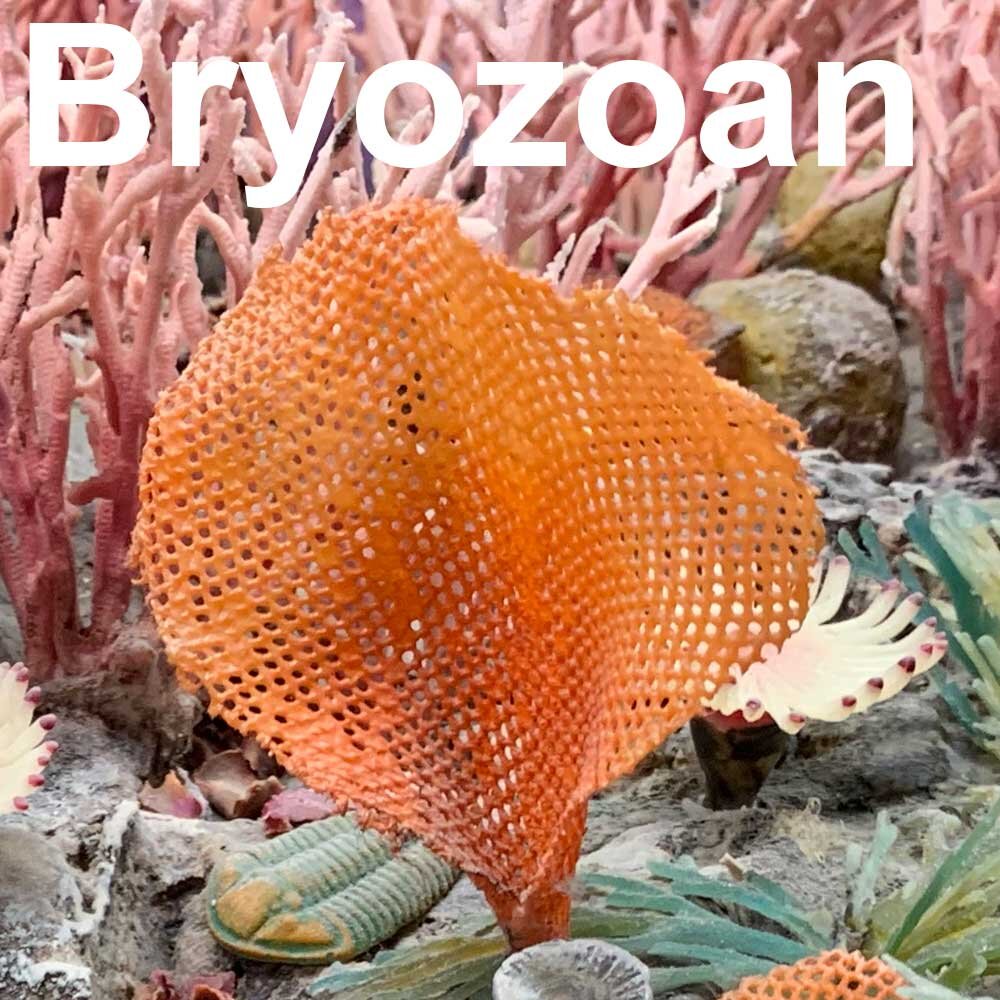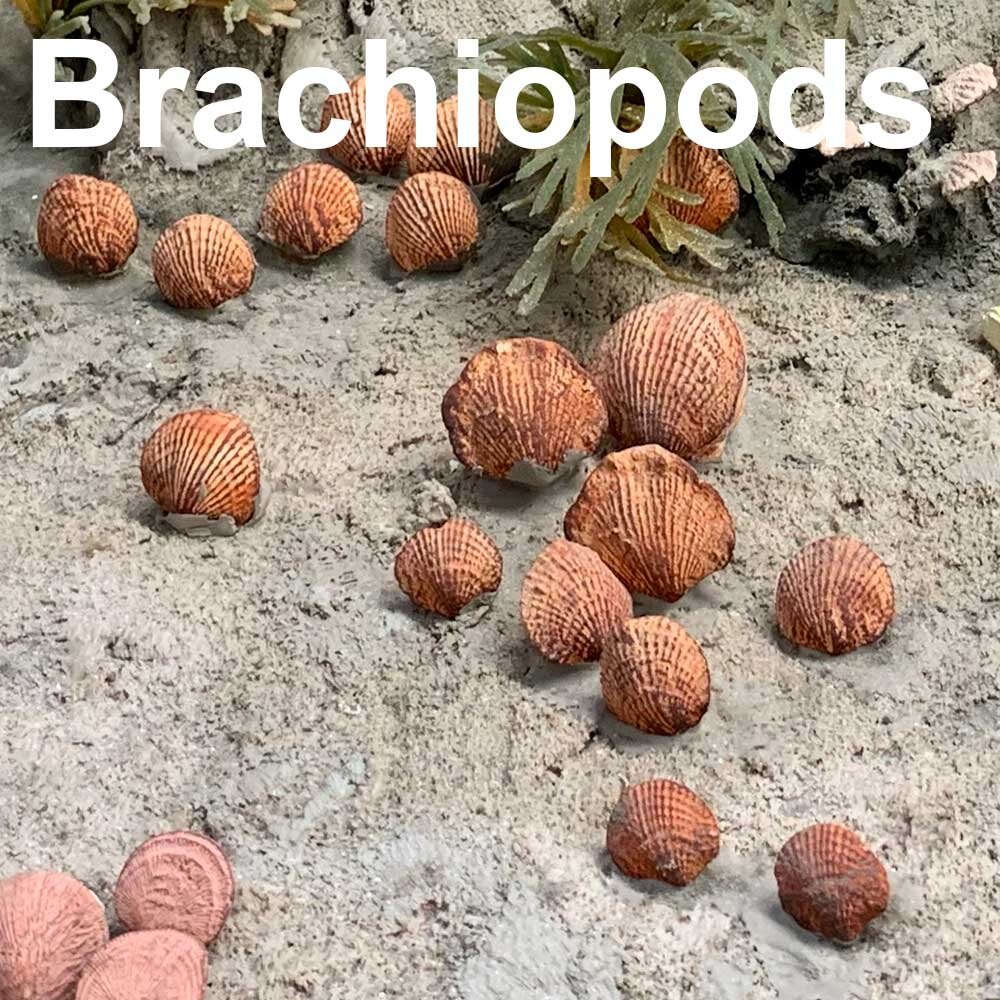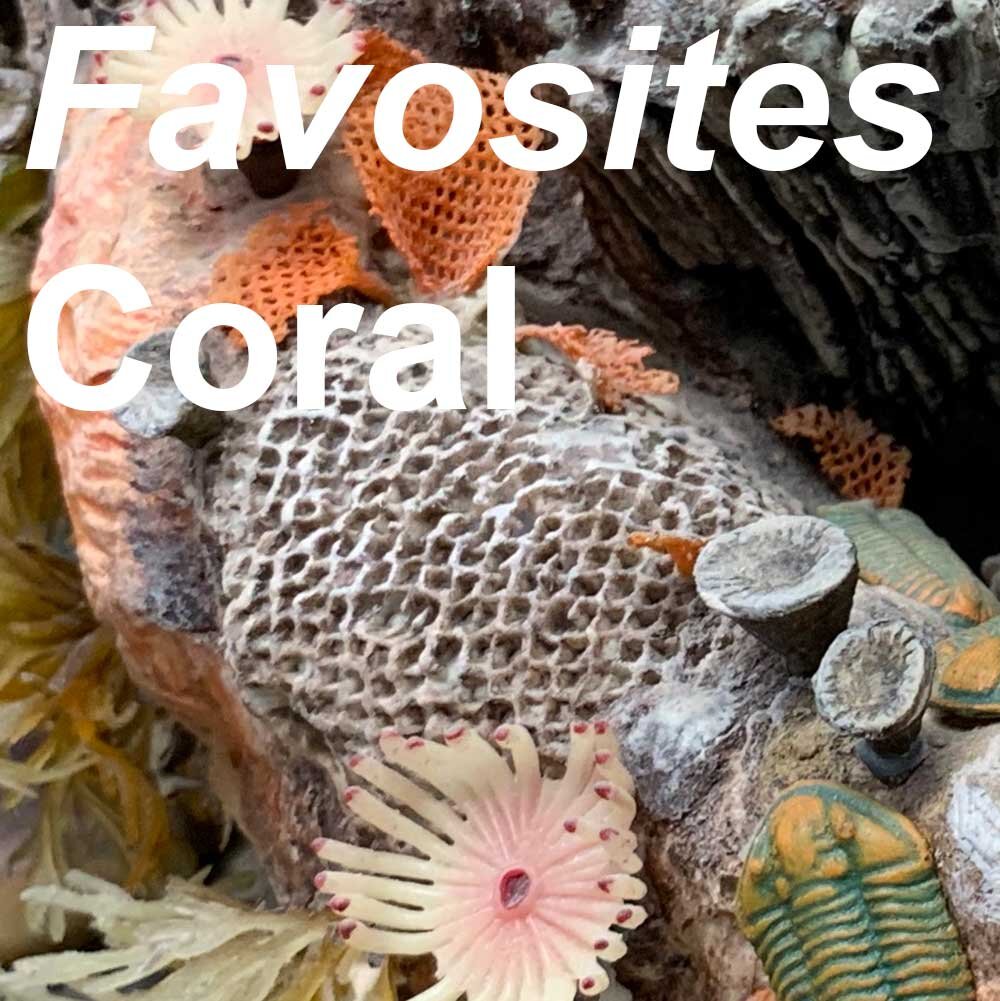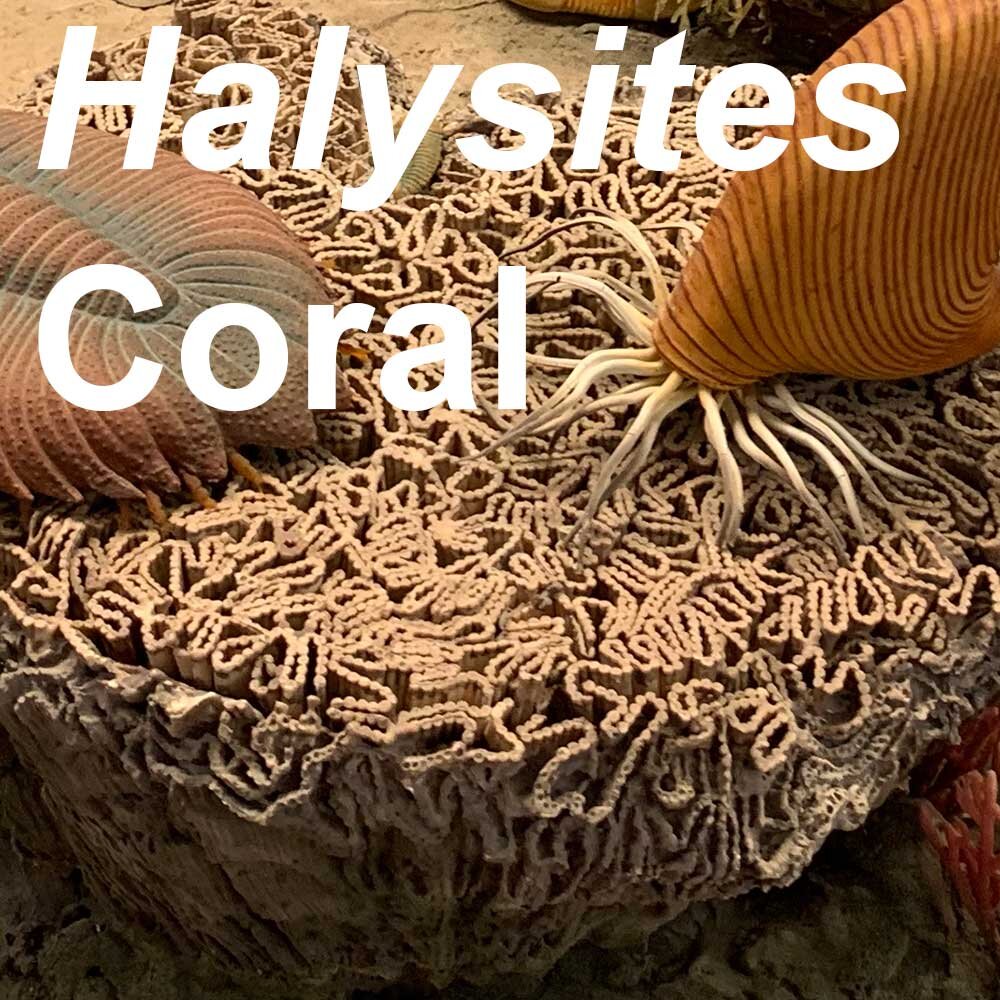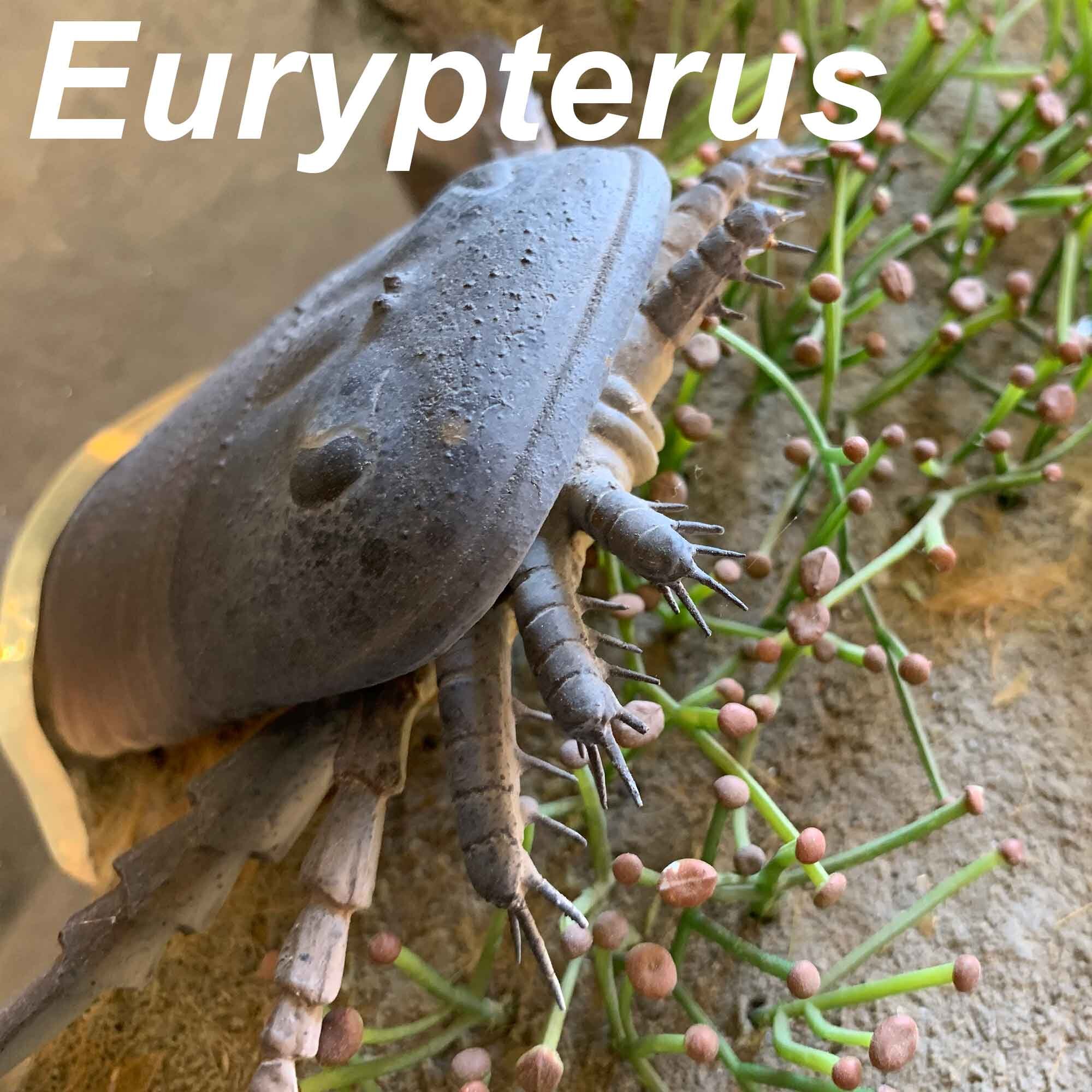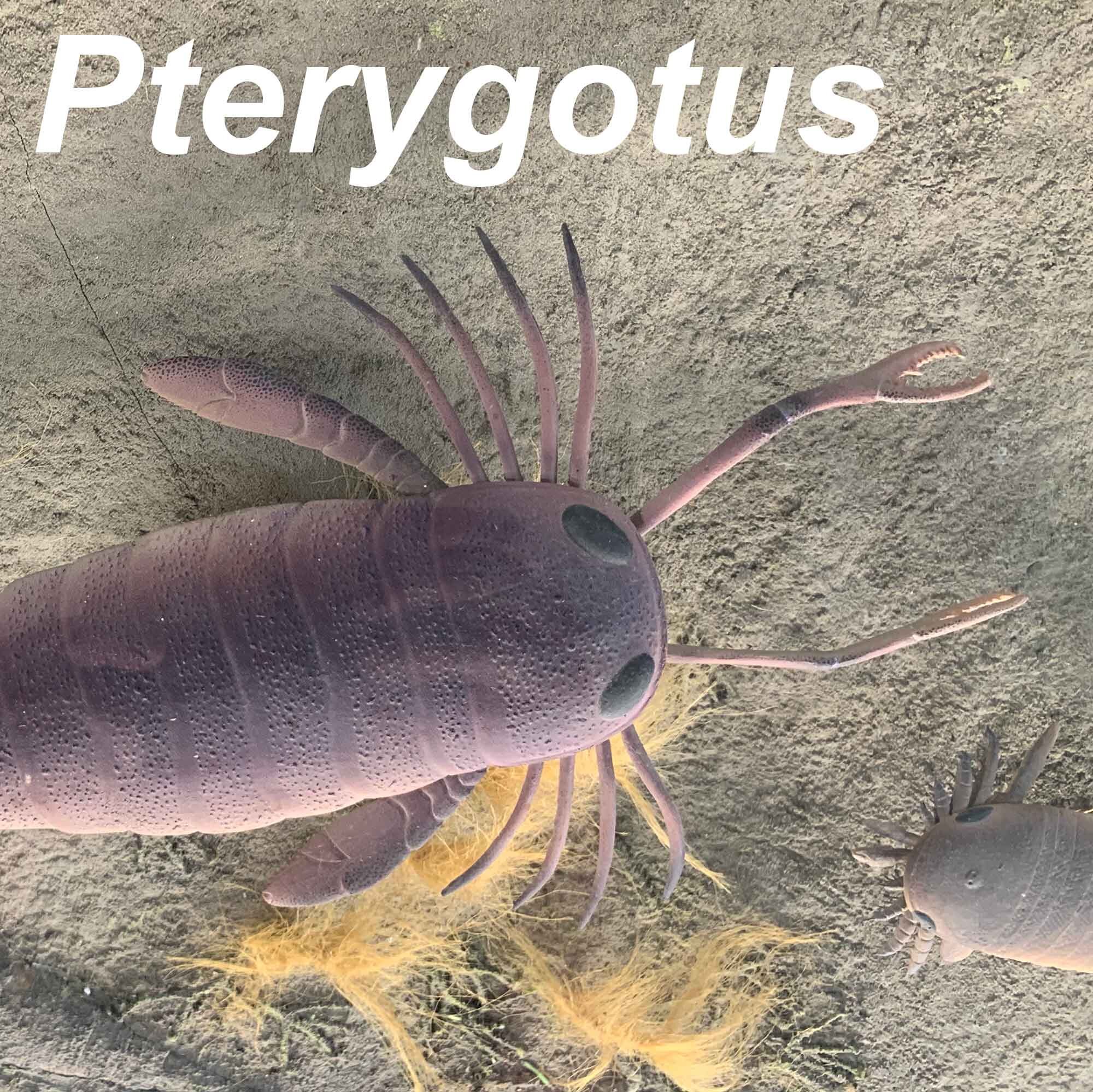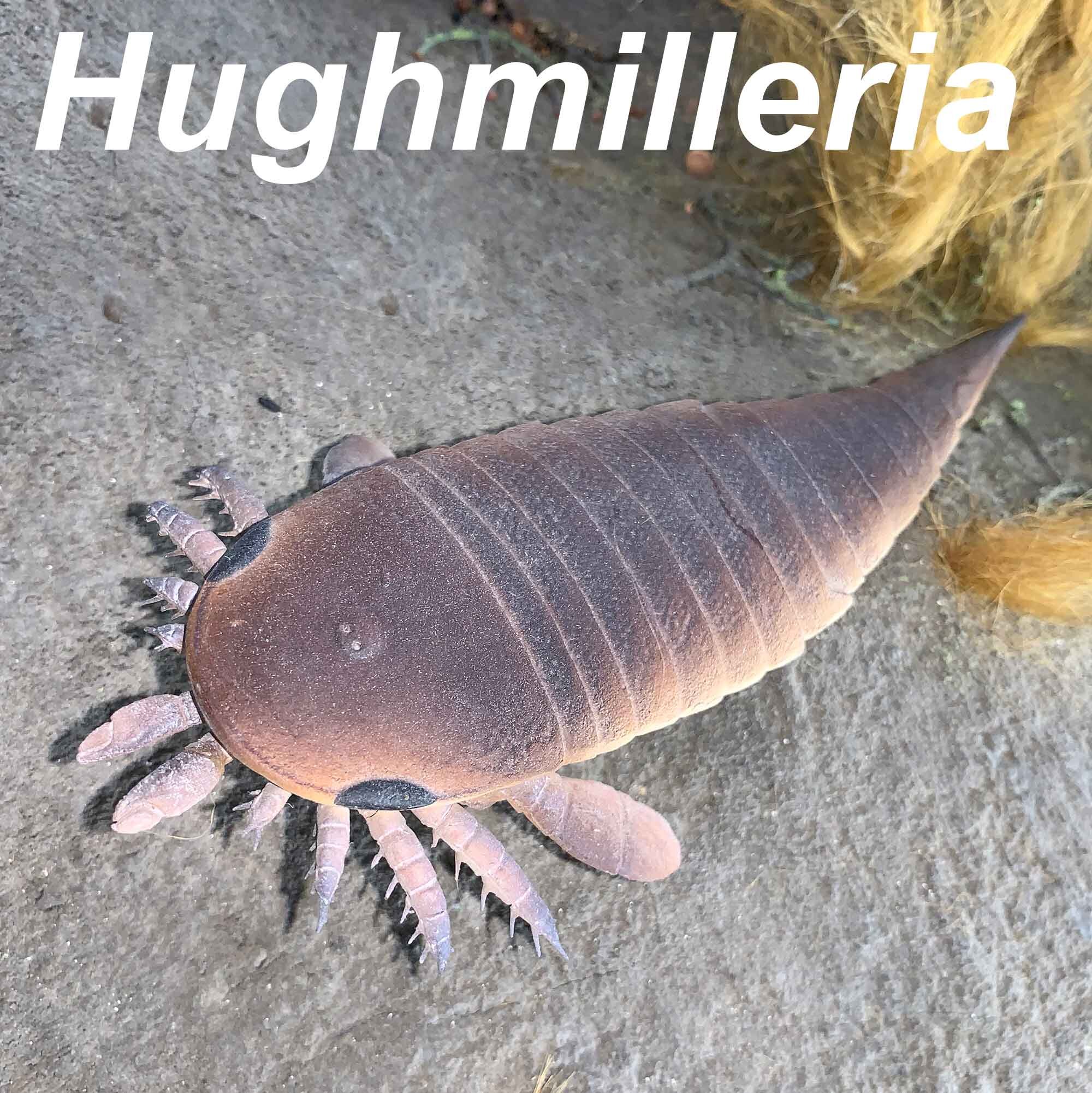Vanished Worlds: The Smithsonian Fossil Dioramas at PRI
Last updated August 14, 2020
Note: Much of the text on this page comes from a temporary physical exhibit at the Museum of the Earth that was shared with the public in 2016.
Earth is more than 4.5 billion years old, and for about the last 4 billion of those years it has supported life. To find evidence of this past life, paleontologists collect and study fossils from sites all around the world. These clues help them build knowledge of prehistoric life on Earth at various points in time. An important part of this process is creating artistic reconstructions of what these ancient organisms may have looked like in life. Illustrations, sculptures, dioramas, and exhibits are hugely influential ways that most people learn about the geological past. Yet as paleontologists uncover more clues, their knowledge of the past changes, and so the artwork that depicts ancient life has to change as well. Paleontology and art are partners in the pursuit of knowledge and both have always played central roles in public exhibits in natural history museums.
Each year, millions of visitors from every corner of the globe flock to the Smithsonian Institution’s National Museum of Natural History in Washington, DC. Their first major fossil exhibition opened in 1911. It contained fossil skeletons of dinosaurs, mammals, and other large animals, as well as numerous paintings and models of what these animals may have looked like in life. These exhibits – eventually named the National Fossil Hall – have been renovated several times over the last 100 years.
In April 2014, the National Fossil Hall closed for another major renovation before being reopened as “The David H. Koch Hall of Fossils—Deep Time“ in June 2019 following a five-year renovation process. Some of the models and dioramas that had been in the Hall for decades were permanently transferred to the Paleontological Research Institution in 2015. These exhibit displays, some created as early as 1904, tell a compelling story of artistic technique, new scientific discovery, and the limitless curiosity and creativity of the human mind. Steggy the Stegosaurus, Amelia the Quetzalcoatlus, and a number of fossil plant models have all become permanent fixtures within the Museum of the Earth. The video below shows how Steggy was rebuilt at the museum after being shipped to Ithaca from the Smithsonian.
The dioramas, however, remain in storage while plans are developed and funds are raised to incorporate them into the permanent exhibits. They were created by Terry Chase Studios in 1980. Paleoartist Terry Chase learned his trade under George Marchand, who was a master of precise and convincing sculptural techniques. In his youth, Chase saw Marchand’s work at the Field Museum of Natural History in Chicago and vowed one day to study under him. Like many, Chase struggled to choose between artistic and scientific careers and after earning his graduate degree in paleontology, went to work for Marchand. Marchand shared his many techniques with Chase. In 1973 Chase opened his own artistic studio in Cedar Creek, Missouri and he is now one of the world’s most prominent museum diorama makers. His dioramas are each one-of-a-kind, with the faux animals and plants made by hand of fiberglass, welded metals, painted figures, and taxidermy.
Over the next month, we will be sharing these five Smithsonian dioramas online, adding one per week to this page. We will also be sharing for the first time new interactive 3D models of these dioramas that you can explore yourself!
Week 1: The Ediacaran Biota
Life Long Ago
Artificial cast of Charniodiscus. Image by “FunkMonk” (Wikimedia Commons; Creative Commons Attribution 2.0 Generic license).
Ediacara organisms are still shrouded in mystery. We know they were soft-bodied creatures that lived in the ocean and likely survived on nutrients in the seawater, but there is still much to discover about how they lived and how they evolved.
The Ediacara fossils are among the very oldest multicellular animal fossils known anywhere in the world. The earliest living organisms, microscopic bacteria, evolved around 4 billion years ago, and multicellular organisms appeared between 1 and 2 billion years ago. Animals, however, came later, evolving and diversifying between 700 million and 1 billion years ago.
The Ediacara biota include some of the oldest known fossil animals. Beyond that, however, they are poorly understood. At various times they have been considered animals, algae, lichens, fungi, or even a completely separate group with no living relatives. What does seem clear is that they lived on the surface of the seafloor, were soft-bodied, moved very little, and lacked any obvious heads, mouths, or digestive organs. Some Ediacara organisms were probably ancestors of later kinds of animals, such as jellyfish, soft corals, or worms.
Fossil Discoveries
Left: Kimberella quadrata (Image by Aleksey Nagovitsyn; Wikimedia Commons; Creative Commons Attribution-Share Alike 3.0 Unported license). Middle: Dickinsonia costata (Image by “Verisimilus”; Wikimedia Commons, Creative Commons Attribution-Share Alike 3.0 Unported license). Right: Spriggina floundensi (Image author unknown; Wikimedia Commons; Creative Commons Attribution-Share Alike 3.0 Unported license).
For many years, paleontologists uncovered fossil evidence of the earliest known multicellular organisms all over the world without knowing quite what they had found. These very ancient fossils eventually came to be known by one of the first localities where they were collected: Ediacara.
In 1946, geologist Reginald Sprigg was inspecting abandoned mines in the Ediacara Hills of southern Australia. During his lunch break, he overturned a few slabs of sandstone, and discovered fossilized imprints of a variety of soft-bodied organisms. Sprigg estimated that these fossils were very old, dating from the Cambrian period, when animals first evolved. He submitted an article about them to the journal Nature, but editors refused the submission and these mysterious fossils were largely forgotten.
Thirteen years later, paleontologist Martin Glaessner finally made the connection between the strange Australian fossils and others from Namibia, England, and elsewhere. With improved dating techniques, scientists soon realized that these fossils were even older than previously thought, coming from the end of the Precambrian time. Soon all of these strange fossils – no matter where they came from – were referred to as the “Ediacara” biota.
The Ediacara Diorama
The Smithsonian Institution’s Ediacaran Biota Diorama, now at the Paleontological Research Institution.
This diorama of the Ediacara biota was made in 1980 by Terry Chase Studios. A huge amount has been learned about these amazing fossils since then, and many of these interpretations have changed.
This diorama was constructed at a time when many paleontologists interpreted most or all of the Ediacaran fossils as representing modern groups of organisms. Further research, however, has revealed that this is no longer a supportable view for many of these organisms. Some were likely related to living groups, while others probably have no living descendants or close relatives. Furthermore, the mode of life of a number of the Ediacara organisms, whatever they are related to, has been reinterpreted.
Kimberella, for example, is represented as a jellyfish, but is now thought to be a bottom-living mollusk-like animal; Dickinsonia is shown as a swimming, annelid worm-like animal, but is now known to have been almost immobile. The diorama contains no signs of microbial mats on the seafloor, which are now thought to have been widespread during Ediacara time. The pink, frond-shaped organisms, Charniodiscus, have an appearance that is similar to modern sea pens, but their biology and classification remains unclear.
We have used a process called photogrammetry to create an interactive 3D digital model of this diorama. Click on the arrow to load the model and explore!
Interactive 3D model of the Smithsonian Ediacaran Biota diorama (Sketchfab). Model created by Emily Hauf.
Check back next week to learn about our Burgess Shale diorama, which documents the explosion of animal life during the Cambrian radiation.
Week Two: The Burgess Shale
Charles Doolittle Walcott (left) and his children Sidney (middle) and Helen (right) excavating fossils at the Burgess Shale locality near Field, British Columbia (ca. 1913). Image from the Smithsonian Institution Archives via Wikimedia Commons.
The Dawn of Animal Life
The Burgess Shale is a layer of rock more than 500 million years old, in the Canadian Rockies. The animals found within the Burgess Shale lived on a muddy seabed in the tropics, probably in less than 100 feet of water. These organisms included algae, cyanobacteria, sponges, brachiopods, worms, trilobites, and many more. Like today, the algae and cyanobacteria got their energy directly from the sun and were at the bottom of the food chain. It’s likely that young arthropods (invertebrate animals like today’s insects, crabs, and spiders) depended on them for food. Larger arthropods in turn fed on these smaller animals.
In 1909, paleontologist Charles D. Walcott, who was also Secretary of the Smithsonian Institution, was on an expedition in Canada with his wife, sons, and daughter when he came across an area of fossil-rich rock contains beautifully preserved fossils of soft-bodied organisms. Astounded by the variety of fossils he found, Walcott continued to collect from this quarry for the next 20 years, amassing more than 65,000 specimens and publishing numerous papers on them. In the 1960s, paleontologist Harry Whittington began to restudy the Burgess. Over the next 20 years, Whittington and his graduate students, Simon Morris and Derek Briggs, found that Walcott had barely scratched the surface of this astonishing fossil deposit.
The animals preserved in the Burgess Shale revealed previously unknown animals and previously unsuspected details of body shape in forms that had been known before. More than 150 species of arthropods, worms, echinoderms, and many other organisms are revealed in the Burgess Shale.
Fossils from the Burgess Shale; sources of images with links follow each taxonomic name. 1, Naraoia compacta, an arthropod closely related to trilobites (Smithsonian Institution). 2, Pikaia gracilens, a cephalochordate-like animal (Smithsonian Institution). 3, Marella splendens, an arthropod (Smithsonian Institution). 4, Waptia fieldensis, a shrimp-like arthropod (Smithsonian Institution). 5, Canadaspis perfecta, a crustacean arthropod (Smithsonian Institution). 6, Hyolithes sp., likely a relative of brachiopods (Smithsonian Institution). 7, Ottoia sp., a type of predatory worm (Smithsonian Institution). 8, Opabinia regalis, a strange arthropod-like animal with a trunk and five eyes (Wikimedia Commons; public domain). 9, Anomalocaris canadensis, a large Cambrian predator; only the front grasping appendages, once interpreted as shrimp-like fossils, are preserved on this specimen (Smithsonian Institution). 10, Sidneyia inexpectans, a large arthropod with a fan-shaped tail (Smithsonian Institution).
From time to time, these organisms were swept off the shallow bottom, perhaps by storms, into deeper water and quickly buried in an avalanche of mud. This rapid burial in fine mud preserved their bodies in fine detail – not just their hard shells, but also their soft body parts, such as antennae, legs, eyes, digestive tracts, and gills. The Burgess fossils are an example of exceptional preservation, and therefore provide a rare “window” into what these ancient animals and plants looked like when they were alive.
The Burgess Shale Diorama
The Burgess Shale diorama, previously on display at the Smithsonian Institution’s National Museum of Natural History prior to arriving at PRI in 2015.
This diorama depicting Burgess Shale life was made in the late 1970s. A huge amount has been learned about these amazing fossils since then and research continues on the fossils today. What have scientists discovered?
The artists combined the environment where the organisms lived with the environment where they died. The seafloor here where most of the animals are positioned was actually in deeper water where their bodies were preserved. The tall cliff at the back was the shallower area where most of these organisms would have lived.
This depiction does not include Anomalocaris, probably the largest and most famous of the Burgess animals. This is because it was not until the 1980s that it became clear that several smaller fossils from the Burgess were actually parts of a single larger form – the 3-foot-long predator Anomalocaris. (This video introduces Anomalocaris.)
New specimens of previously known species, as well as new species altogether, have been discovered in both the original Walcott quarry, as well as new nearby Burgess Shale localities, increasing our knowledge of the early history of animal life.
Highlights
You can explore this diorama yourself with our interactive 3D model.
Week 3: Ordovician Shallow Seas
The Ordovician Period spanned an interval of time from 485 to 444 million years ago. Geologists working in Wales named the Ordovician Period at a time when the boundaries between prehistoric periods were less clear. Since then, fossil evidence of Ordovician life has been found in Wales, China, Western Australia, Argentina, the United States, and Canada. Early in the history of geology, divisions between the geologic periods were not as clear as they are now. For example, in the late 1800s British geologists Adam Sedgwick and Roderick Murchison were both studying the same rocks beds of Northern Wales. Sedgwick thought these rocks should be classified as Cambrian, while Murchison, however, thought they were younger and placed them in the Silurian. British geologist Charles Lapworth attempted to resolve this long-running dispute in 1879, when he realized that the fossils found in these layers were actually quite different from those in either the Cambrian or Silurian. His assertion that they should be placed in a new period, the Ordovician Period, was generally accepted at the time, but did not actually receive formal approval from the International Geological Congress until 1960.
The image below shows a reconstruction of what the world looked like 485 million years ago.
At the beginning of the Ordovician, sea levels were high and the climate was warm. By the end of the period, massive glaciers had formed over the South Pole, causing shallow seas to drain and sea levels and temperature began to drop, leading to the first of the five major episodes of mass extinction.
Life in the Ordovician was generally similar to that in the Cambrian. Trilobites continued to be diverse and abundant, as they had been in the Cambrian, but now sponges, corals, crinoids, nautiloid cephalopods, and especially brachiopods expanded greatly in abundance and diversity. The world’s first coral reefs appeared in Ordovician seas. But these seas were largely without fish. Although the first bony vertebrates appeared in the Ordovician, they lacked jaws and were much less ecologically important than they would be later.
A typical slab of fossiliferous Ordovician limestone from near Cincinnati, Ohio. Branching bryozoans are visible, as are the shells of brachiopods and fragments of other marine life.
Exposures of rocks in the region surrounding Cincinnati, Ohio preserves rich evidence of Ordovician sea life. The Digital Atlas of Ordovician Life provides a detailed overview of many of the Ordovician fossils that can be found there. Further, the Dry Dredgers is an organization of avocational fossil collectors and enthusiasts who focus on exploring and learning about this remarkable fossil record. Examples of Ordovician fossils from this region in PRI’s fossil collection are shared below.
Exposures of rocks in the region surrounding Cincinnati, Ohio preserves rich evidence of Ordovician sea life. The Digital Atlas of Ordovician Life provides a detailed overview of many of the Ordovician fossils that can be found there (the images below are derived from the Ordovician Atlas). Further, the Dry Dredgers is an organization of avocational fossil collectors and enthusiasts who focus on exploring and learning about this remarkable fossil record. Examples of Ordovician fossils from this region in PRI’s fossil collection are shared below.
The Ordovician Shallow Seas Diorama
The Ordovician Shallow Seas diorama, previously on display at the Smithsonian Institution’s National Museum of Natural History prior to arriving at PRI in 2015.
This diorama of Ordovician life was made in 1955 by George and Paul Marchand, who were born into a world of museum dioramas and detailed artistry. Their father, Henri Marchand, studied sculpture under renowned artist Auguste Rodin in France, and later moved with his wife Clothilde to work in the United States at the New York State Museum. George and Paul worked alongside their father to create breathtaking dioramas of the natural world. The Marchands continued their work at the Buffalo Museum of Science and by the 1930s, George and Paul had taken over the diorama work there from their father. The Marchands pioneered techniques of creating realistic, life size scenes that fooled the eye with their curved backdrops and taxidermy specimens.
A huge amount has been learned about these amazing fossils since then. What have scientists discovered?
The green algae is hypothetical and probably incorrect. Things that look like seaweeds in diorama may be misinterpretations of what we now know to be trace fossils. If any true seaweeds were shown at all, they too would be bent over with the current.
In the 1970s, scientists first used deep-water submersibles to explore the ocean. Due to those firsthand observations, we now know that modern crinoids lean with the current, with arms splayed out in a broad cone. So it is likely that these prehistoric crinoids would not have been so straight and upward-facing.
Rugose (“horn”) corals are shown upright. Modern corals that have similar shape are buried with only the polyp exposed, and so now we would depict these corals on or in the sea floor.
Like their smaller relatives in the diorama, the large straight-shelled nautiloid cephalopods would not have sat passively on the sea floor. They were likely mobile predators, swimming (backward, by jet-propulsion) and hunting just off the bottom.
The suckers on the tentacles of these nautlioids may be incorrect. Their tentacles might have had tentacle sheaths (like modern Nautilus) rather than none (like modern octopus).
Highlights
Isotelus Paleozoic Pal
The trilobites shown in the diorama are both examples of the genus Isotelus, which is one of our recent Paleozoic Pals. Additionally, a child-friendly guide to trilobites is available here.
You can explore this diorama yourself with our interactive 3D model. Try to locate the models highlighted above.
Week 4: Silurian Shallow Seas
In the millions of years before the Silurian Period, Earth’s climate fluctuated erratically. By Silurian time (444 to 419 million years ago), however, the climate generally stabilized. Large glacial formations melted and the major seas rose substantially.
Underwater, an amazing variety of organisms—including nautiloids, corals, echinoderms, and sponges—depended on each other for food and shelter. And it was during the Silurian that fish first evolved jaws.
Reconstruction of the Silurian jawed fish Nerepisacanthus denisoni. Image from Burrow and Rudkin (2014) in PLoS ONE (Creative Commons Attribution 4.0 International license). Artwork by Danielle Dufault.
Trilobites were still important members of marine communities, but they were less abundant and diverse than in the preceding Ordovician Period. Brachiopods continued to be the most numerous and species-rich group of animals in the world’s oceans.
Recognizing the Silurian Period
When the science of geology was first founded, scholars from Great Britain made find after find. The Silurian Period was investigated and described by Roderick Murchison, an accomplished geologist who traveled the world uncovering Earth’s secrets. In early 19th century England, the field of geology was growing rapidly. Scholars had only just begun to study the Earth, its rocks, and its history, so there was still much to uncover. Scottish geologist Sir Roderick Impey Murchison worked on an area at the border of England and Wales in the 1830s. Based on his study of the rocks there, he established the Silurian Period. In 1835, together with his friend and colleague Adam Sedgwick, Murchison presented a paper describing the relationship between the Silurian and Cambrian periods, and this laid the groundwork for our modern geological timescale. Unfortunately the two men strongly disagreed on the date that one period ended and the other began, and their friendship turned to a bitter feud.
Examples of Silurian Fossils
The following interactive 3D models are of Silurian-aged invertebrate animal fossils from PRI’s Research Collection and public exhibits at the Museum of the Earth. Click the white arrow to load the model.
The Silurian Shallow Seas Diorama
The Silurian Shallow Seas diorama, previously on display at the Smithsonian Institution’s National Museum of Natural History prior to arriving at PRI in 2015.
This diorama of Silurian life was made in 1955. A huge amount has been learned about these amazing fossils since then. What have scientists discovered?
The green algae is largely hypothetical and probably wrong. For example, the tall branching forms were based on fossils that turn out to be feeding burrows, not algae at all!
The diorama combines animals that probably lived in different environments on the seafloor. For example, the large Halysites coral likely did not live with the abundant Dalmanites and Arctinurus trilobites, which are mostly found in deeper mud-bottom settings.
There were no coral reefs in the Silurian as we know them today. Instead, there were mounds of corals, bryozoans, and other bottom-living organisms.
The stalked Caryocrinites cystoids are a bit too tall and it is unlikely their arms could bend quite as flexibly as shown.
Highlights
You can explore this diorama yourself with our interactive 3D model. Try to locate the models highlighted above.
Week 5: Eurypterids, Marine Predators
Silurian sea life was diverse (see Week 4 diorama above). Reefs were filled with many different kinds early fish, mollusks, corals, trilobites, and animals called eurypterids, also known as sea scorpions. Despite this name, eurypterids were not scorpions: their closest living relative is the modern horseshoe crab.
Painting of a eurypterid fossil by Barbara Page; artwork is on display in the Museum of the Earth’s “Rock of Ages, Sands of Time” display.
Eurypterids lived in ocean reefs and shallow water habitats from about 460 to 252 million years ago (Ordovician to Permian periods). There were several different major types of eurypterids and a range of sizes. Although most eurypterids were less than 1 to 2 feet long, others were among the largest invertebrate animals that have ever lived. The largest eurypterids reached lengths of more than 8 feet. The world’s single largest complete fossil specimen of a eurypterid–Acutiramus macrophthalmus (PRI 42897), measuring 49.5 inches long–is on display here in the Museum of the Earth (learn more about this specimen in this open access article by Briggs and Roach, 2020 in Geology Today).
Specimen of the giant eurypterid Acutiramus macrophthalmus on display at the Museum of the Earth. Image modified from fig. 9 in Briggs and Roach (2020 in Geology Today).
Like living arthropods, such as crabs or lobsters, eurypterids had exoskeletons, hard outer “shells” that protect their organs. Their broad, paddle-like legs helped them swim through the water, their small, thin arms tore food apart for eating, and their three sets of short legs were used for walking and capturing food. Eurypterids shed their exoskeletons to grow and many of the fossils that they left behind represent these molts.
The first fossil eurypterids ever found came from Silurian rocks in New York State. In 1818, a collector by the name of S. L. Mitchill uncovered a fossil in Oneida County, New York. He thought it was the remains of a prehistoric catfish, and it wasn’t until seven years later that American zoologist James Ellsworth De Kay reexamined the specimen and identified it as an arthropod. More and more of these kinds of fossils were discovered throughout the 19th century, mostly in the northeastern United States, but also in Europe. Eurypterids are so common and well preserved in Silurian-aged rocks in northern New York State that in 1984 one species, Eurypterus remipes, was designated as the official State Fossil. The Paleontological Research Institution has many specimens of this species, as well as other eurypterids, in its Research Collection and on display in the Museum of the Earth. Interactive 3D models of several of these specimens are shared below.
Paleozoic Pals
The Paleontological Research Institution has produced two plush Paleozoic Pals that both represent Eurypterus remipes, the New York State fossil. One is 9 inches in length; the other is a giant 5 foot-long body pillow! Both can be ordered from PRI’s online store.
Plush eurypterid Paleozoic Pals produced and sold by the Paleontological Research Institution. Explore the entire collection of Paleozoic Pals here.
Smithsonian Eurypterid Diorama
The eurypterid diorama shown above was created in 1980. Although some details have been revised since then, most paleontologists who specialize in these fossils agree that this diorama is still basically accurate. The image above is an interactive 3D model of this diorama. Click on the arrow to load and explore the diorama by scrolling and zooming in with your mouse. Search the diorama for the eurypterids Eurypterus, Pterygotus, Hughmilleria, a centipede (one of the earliest land animals), and Cooksonia, one of the first land plants.
Highlights
~ The End ~


